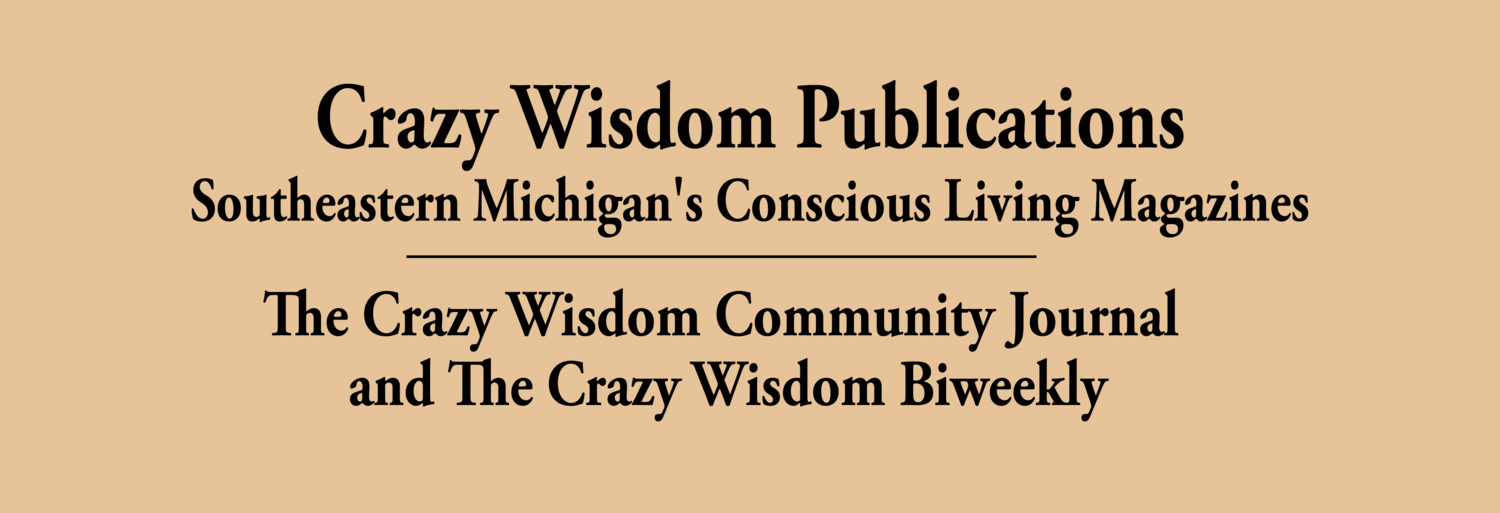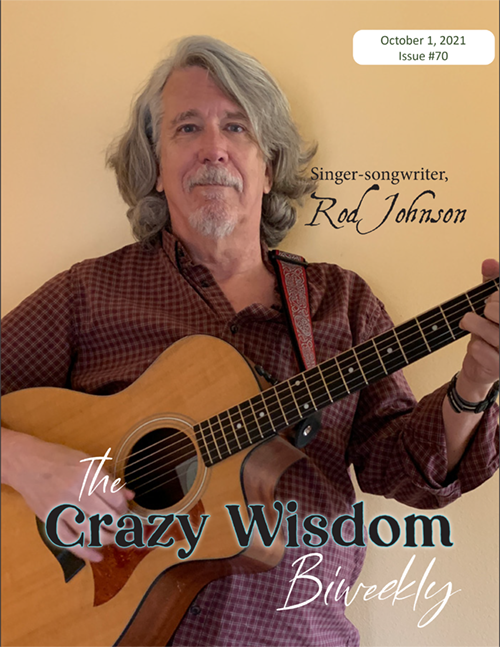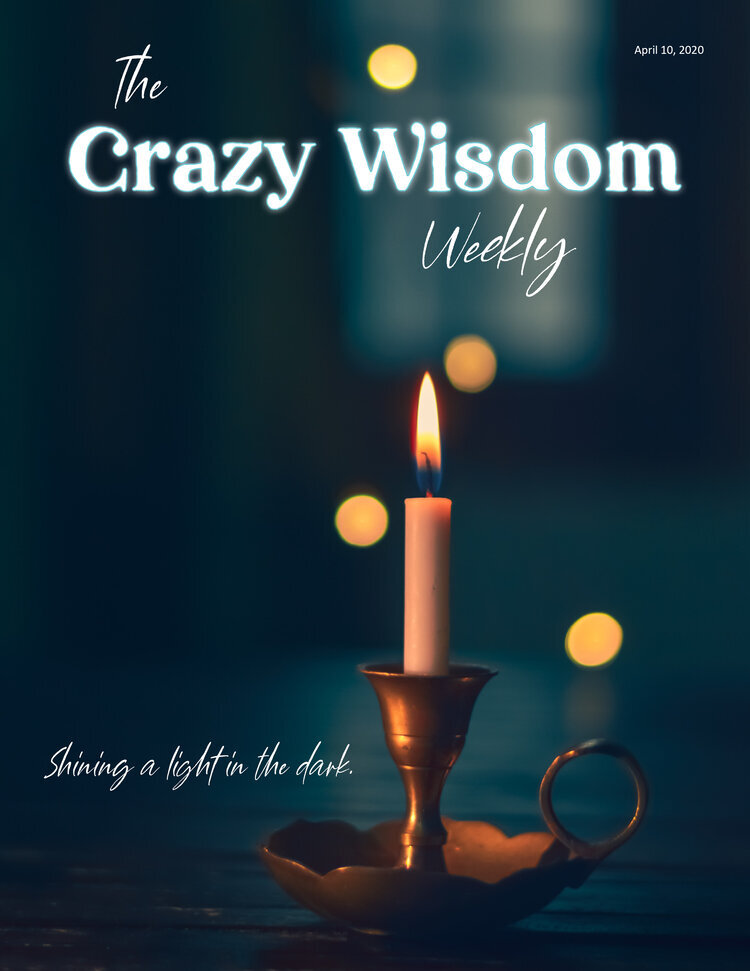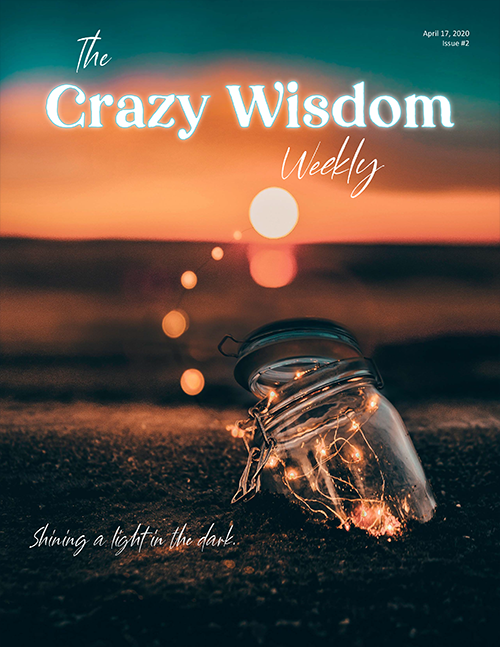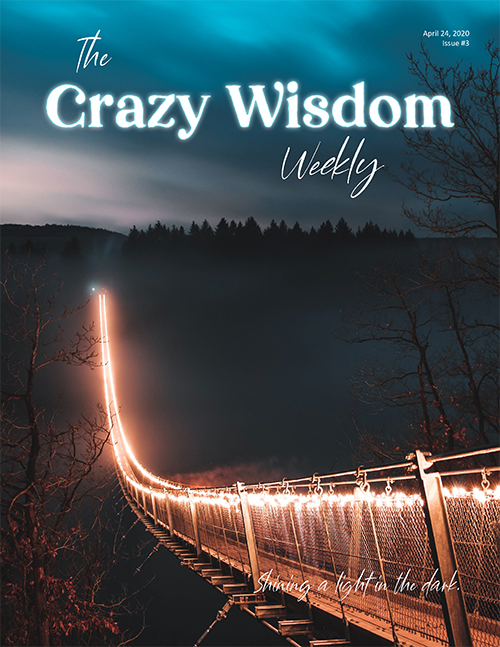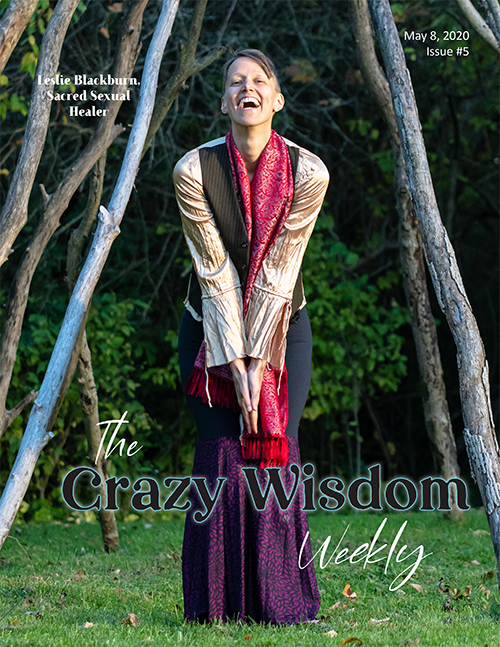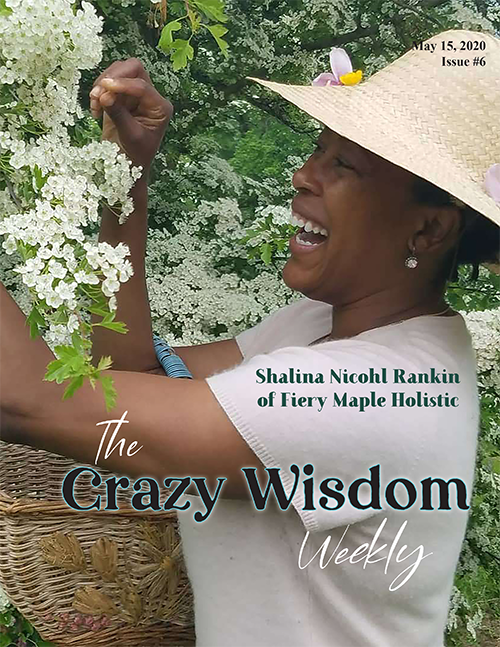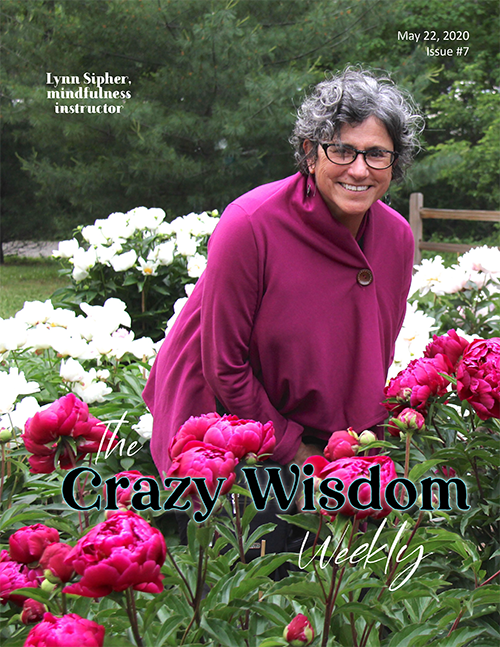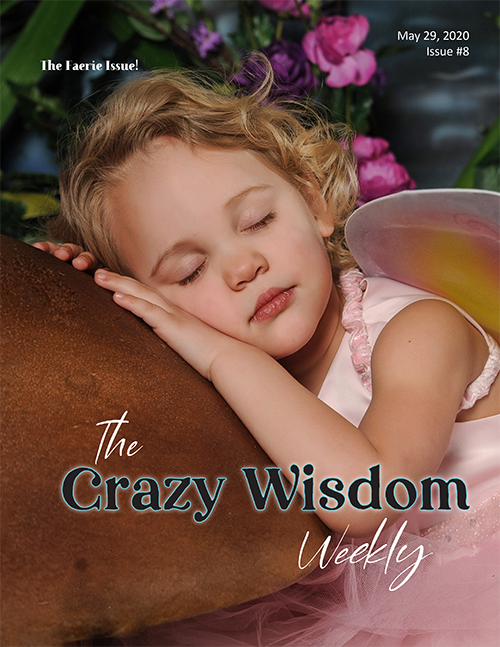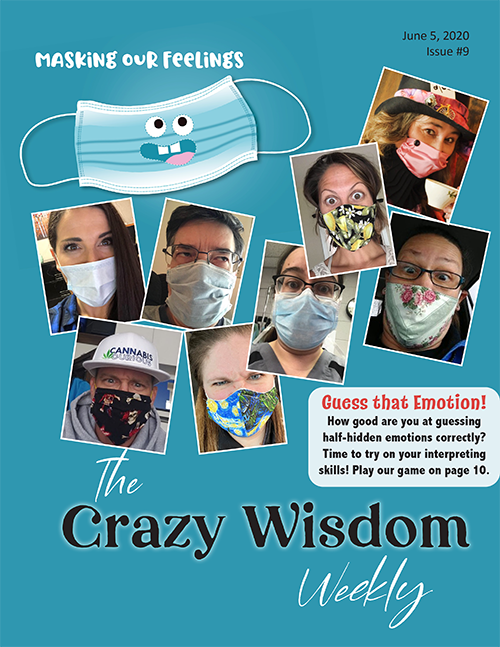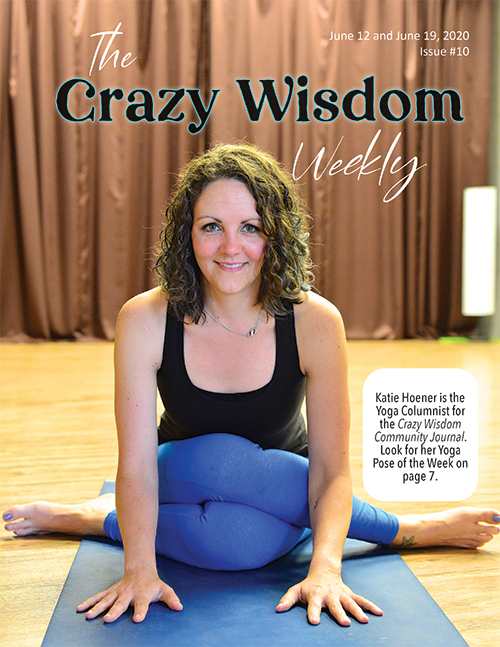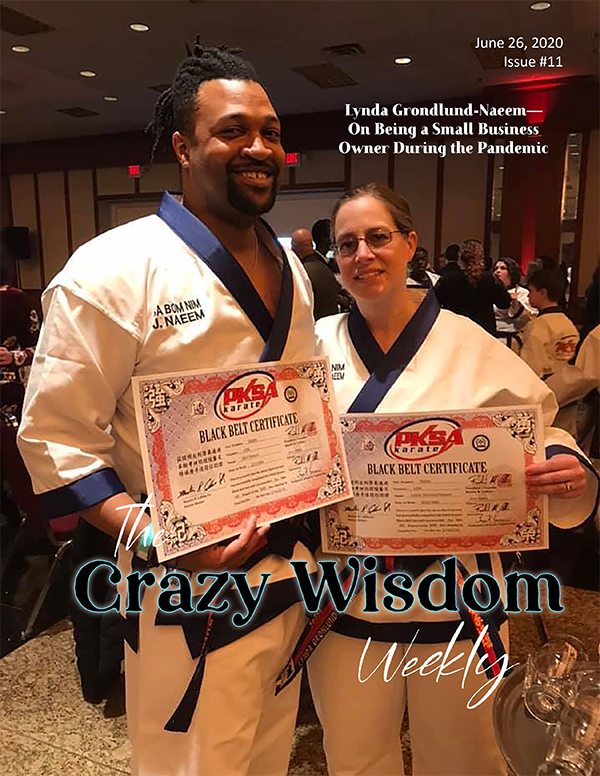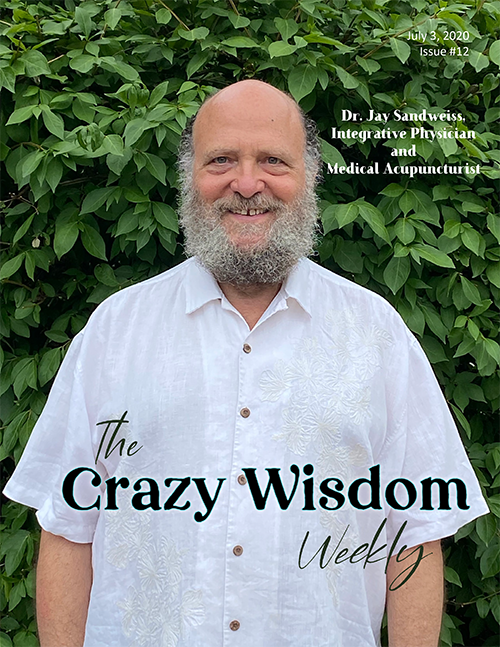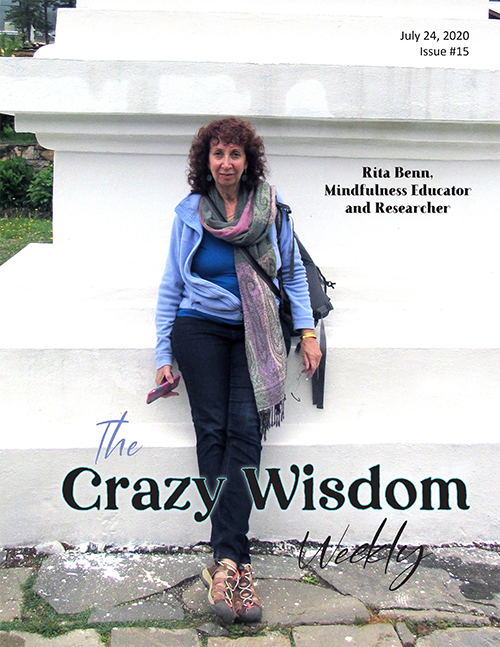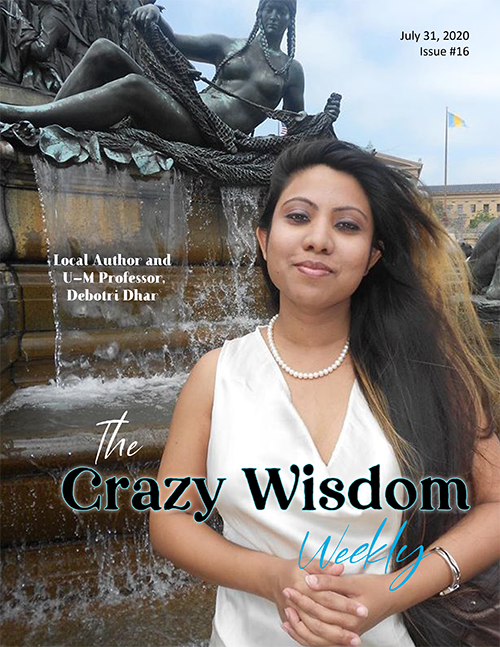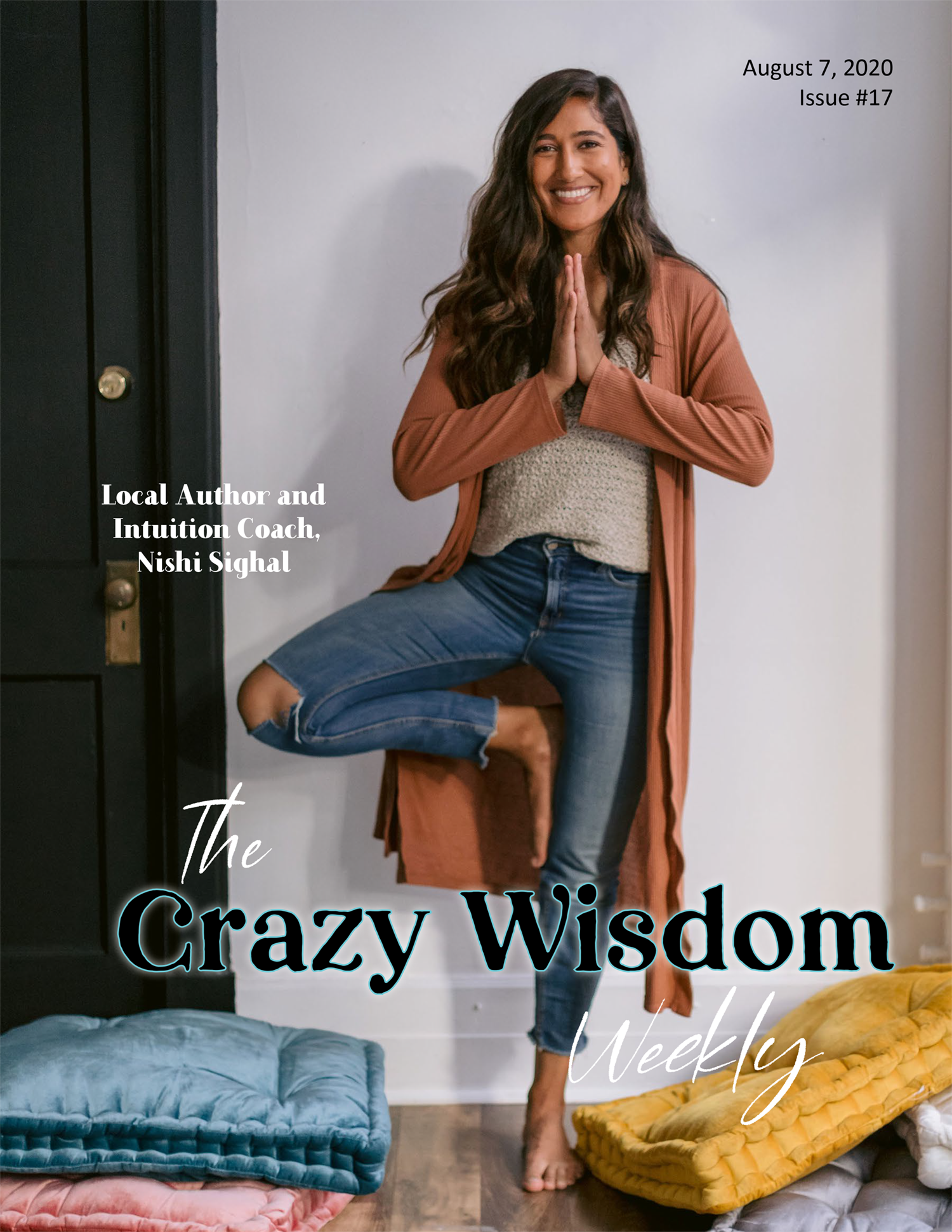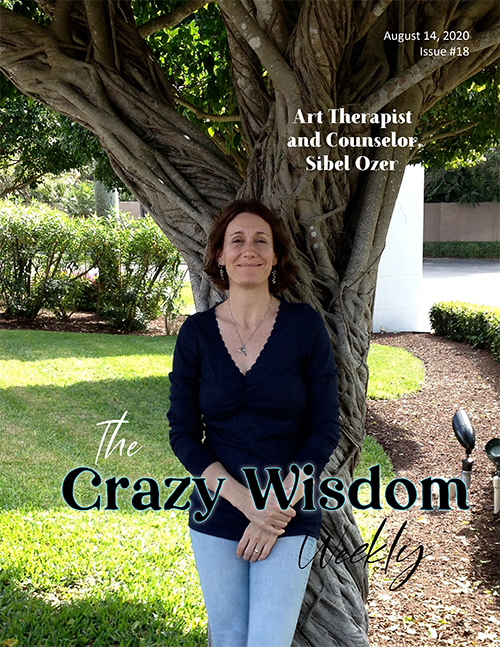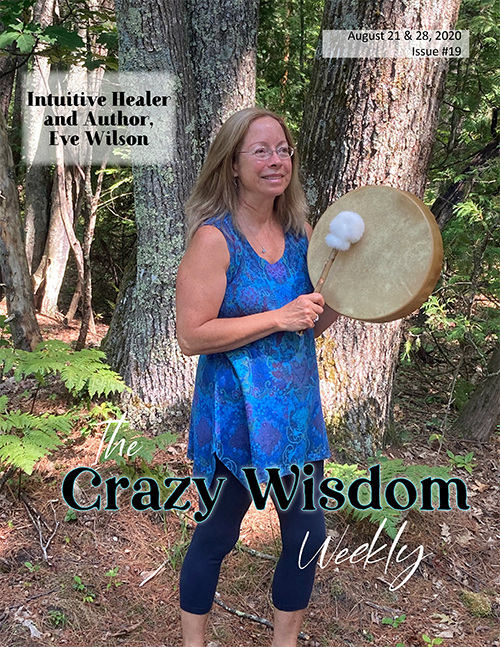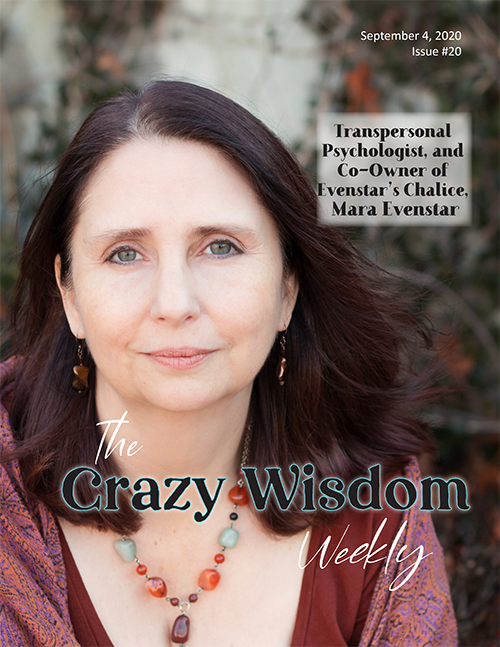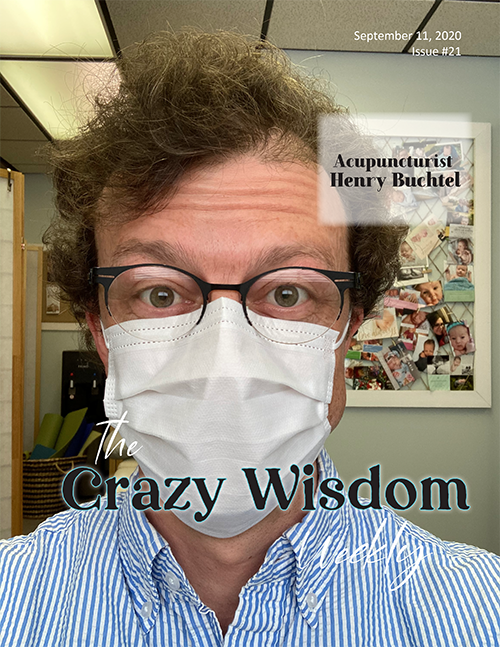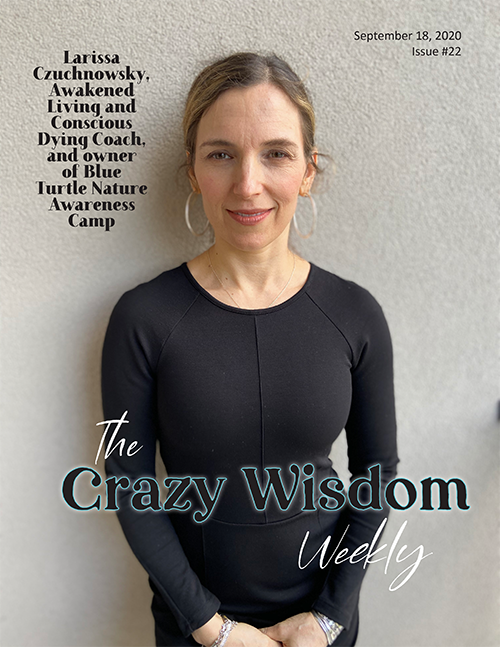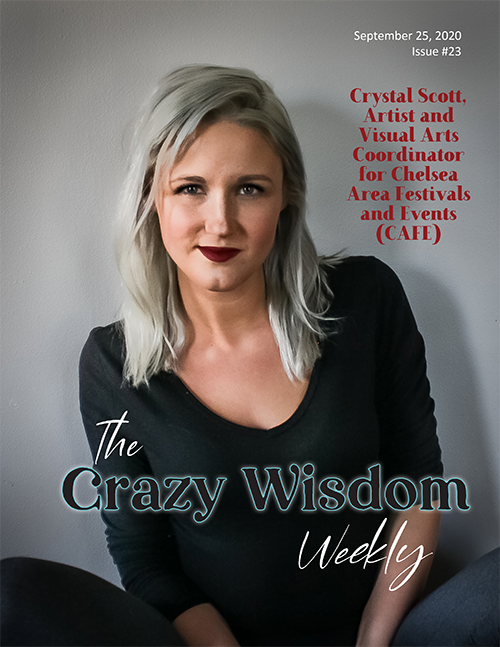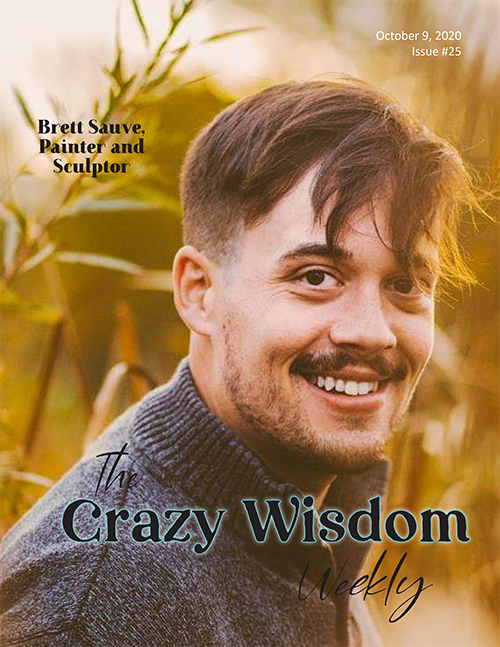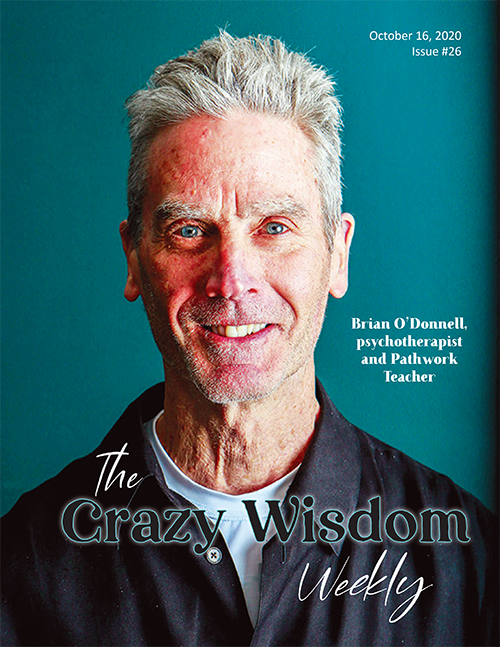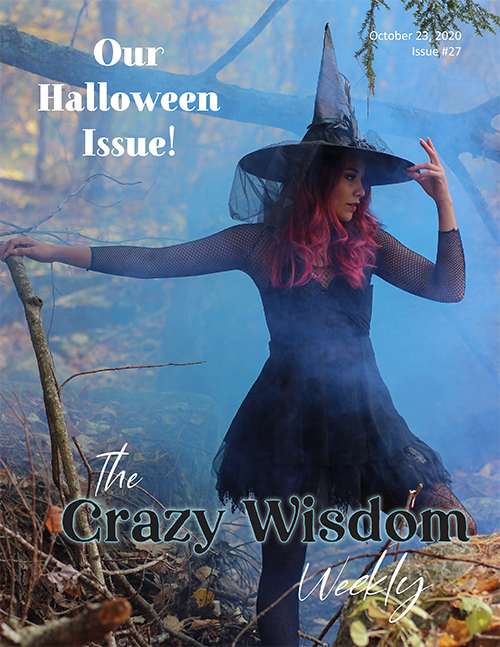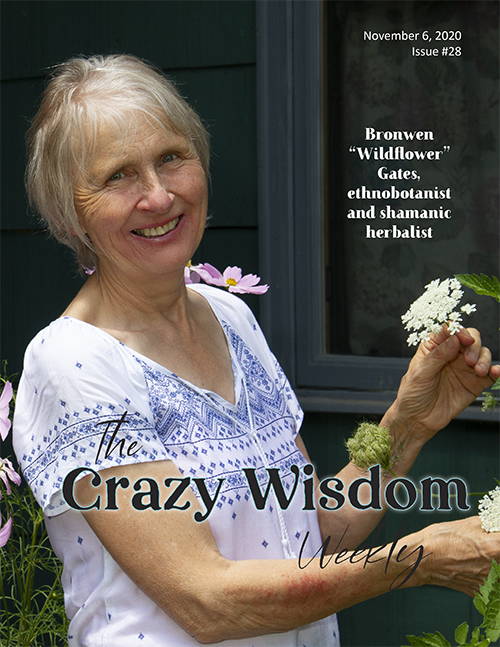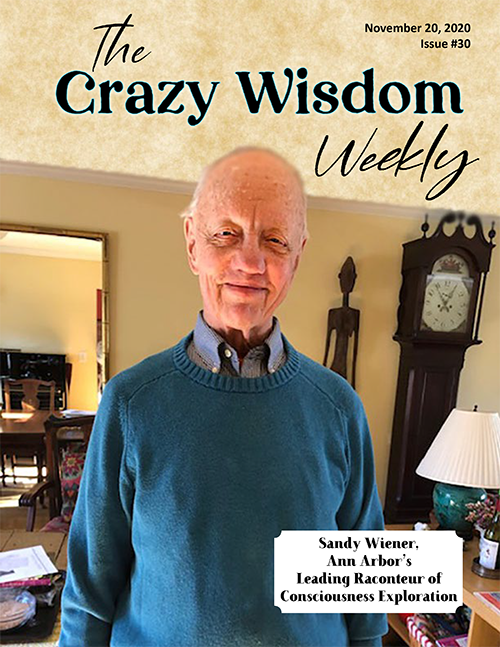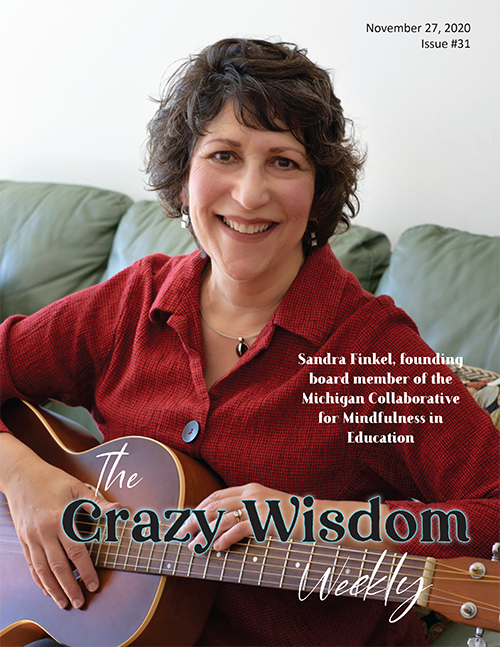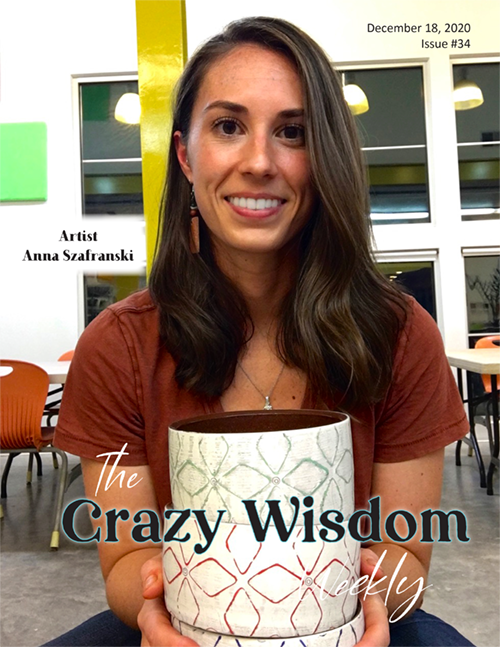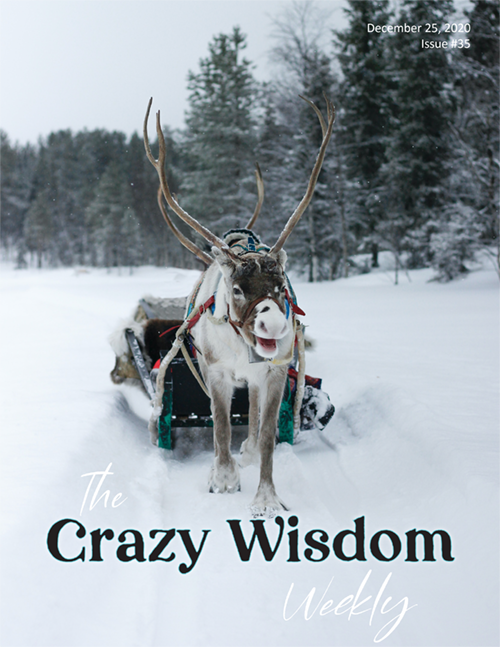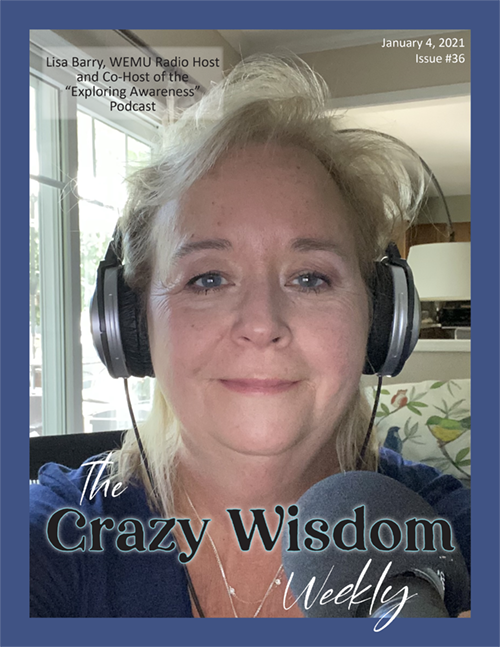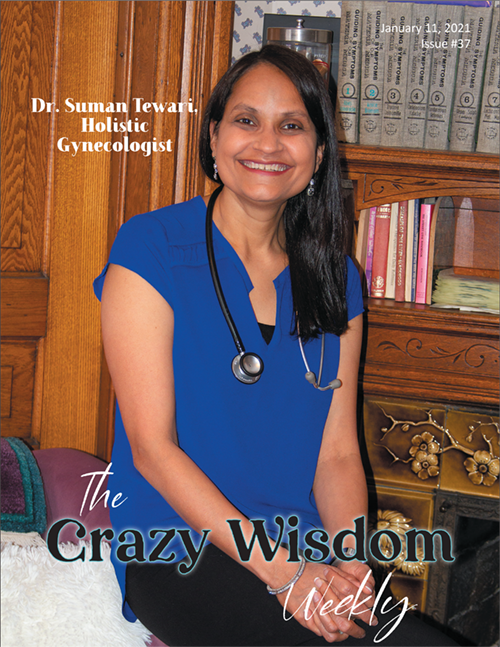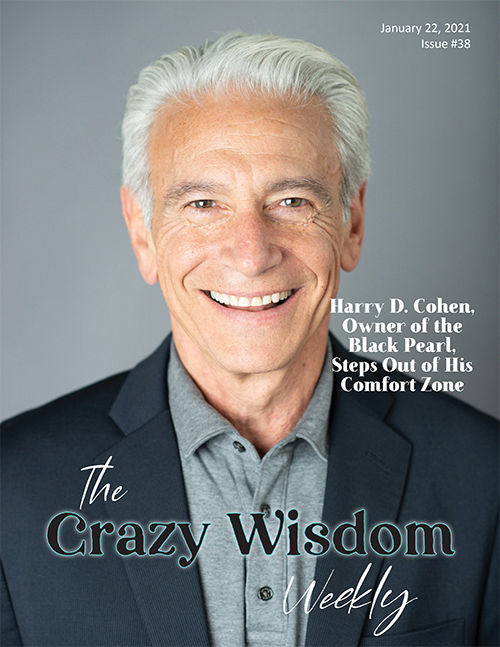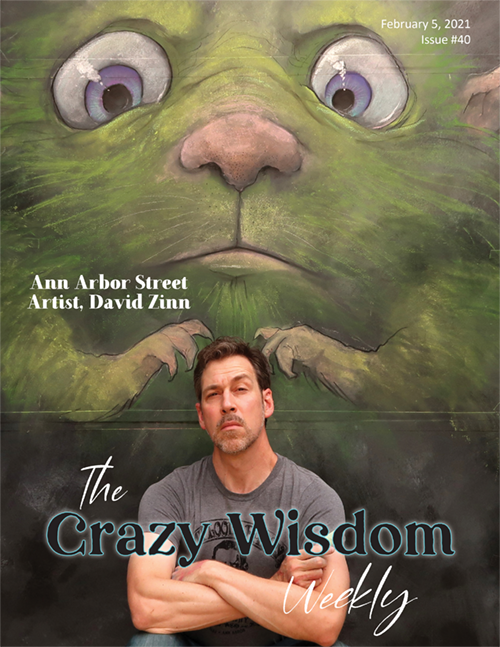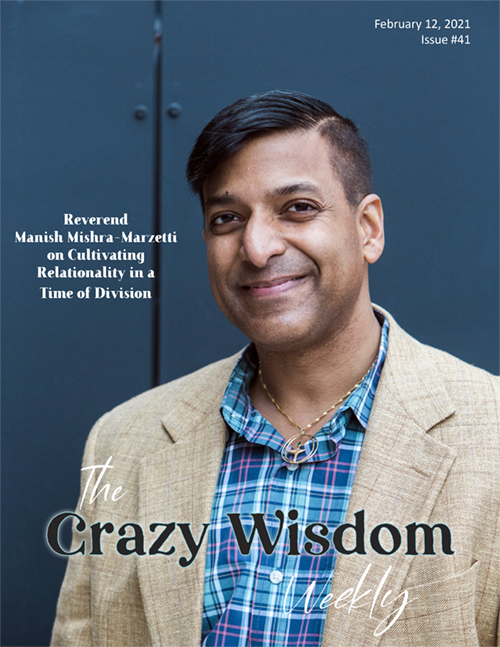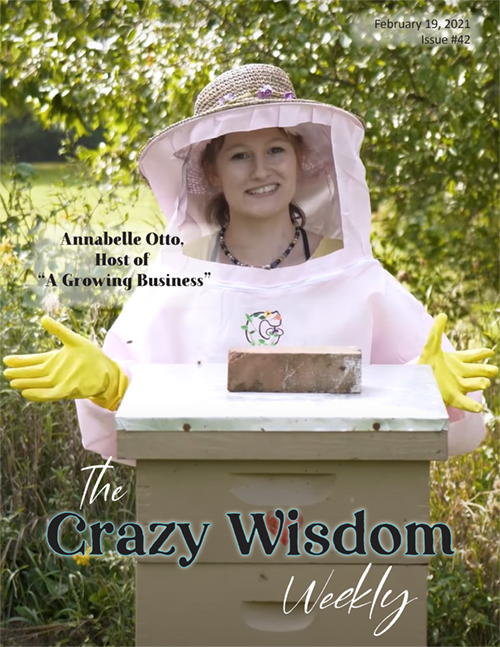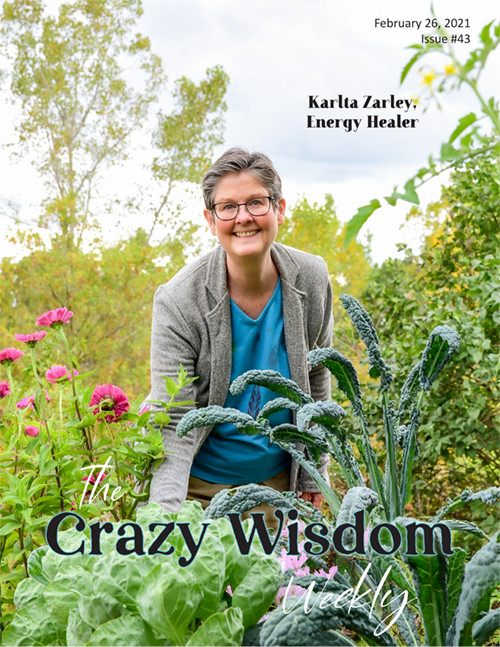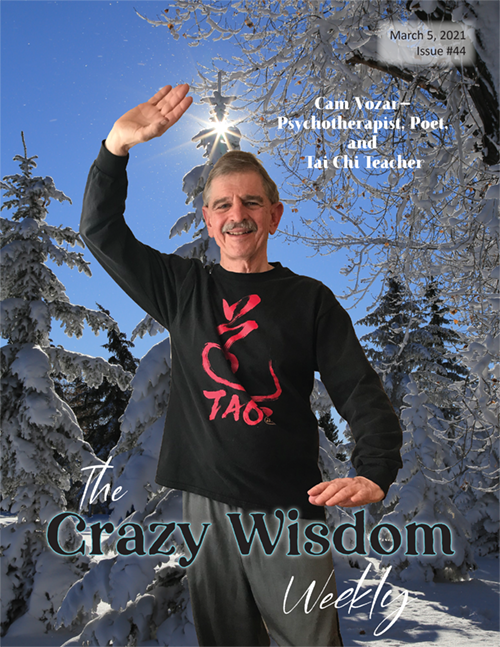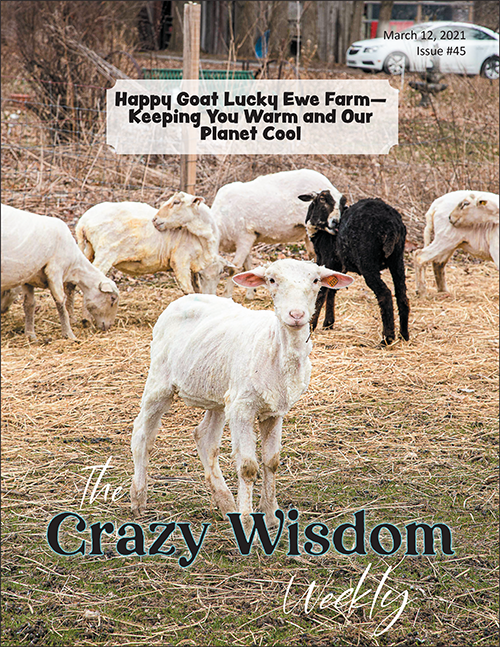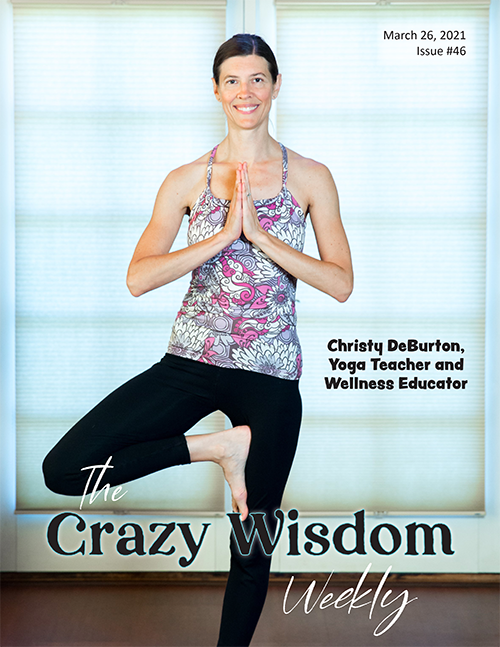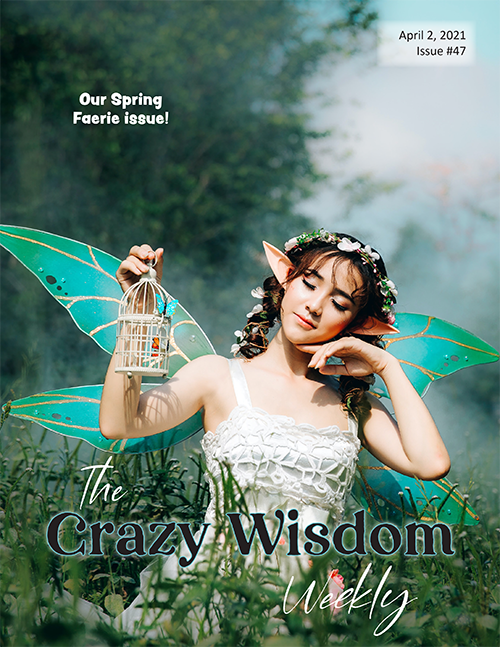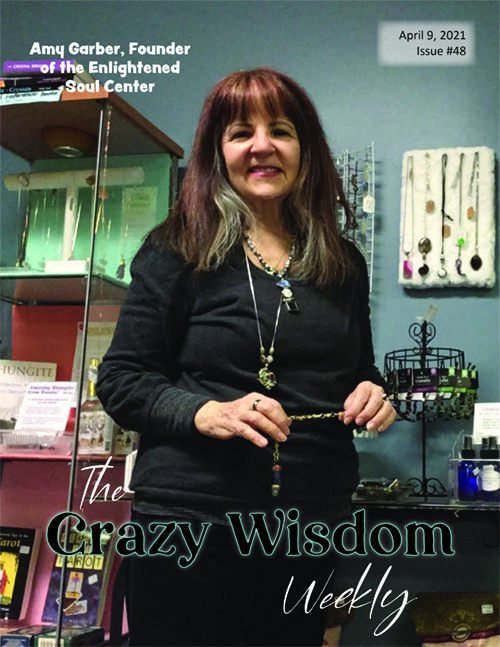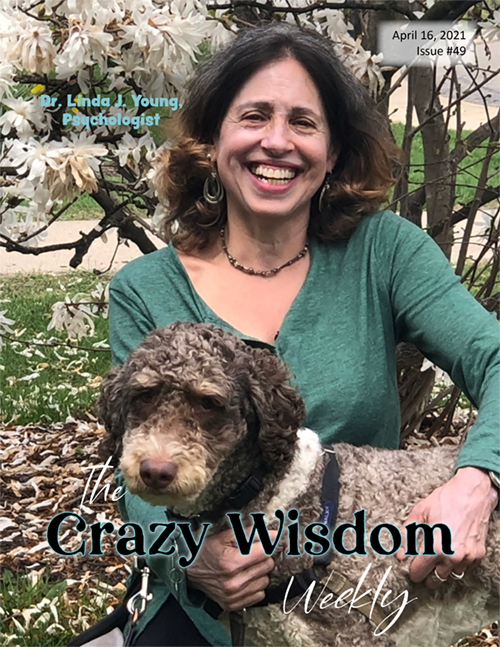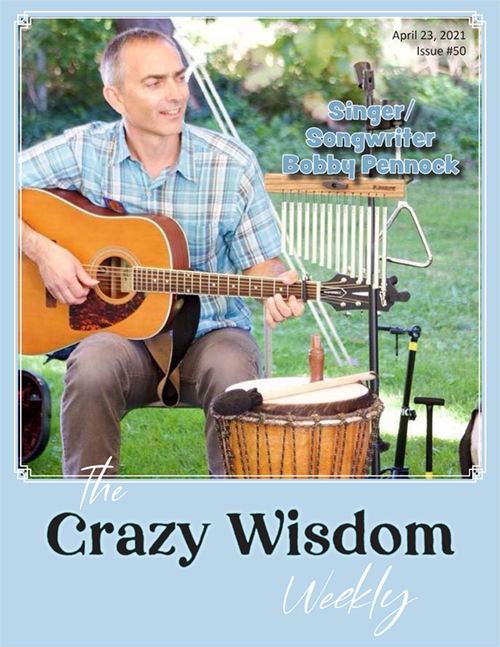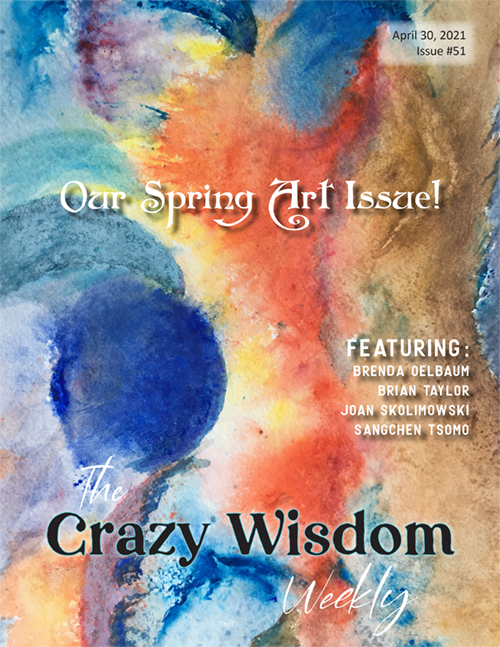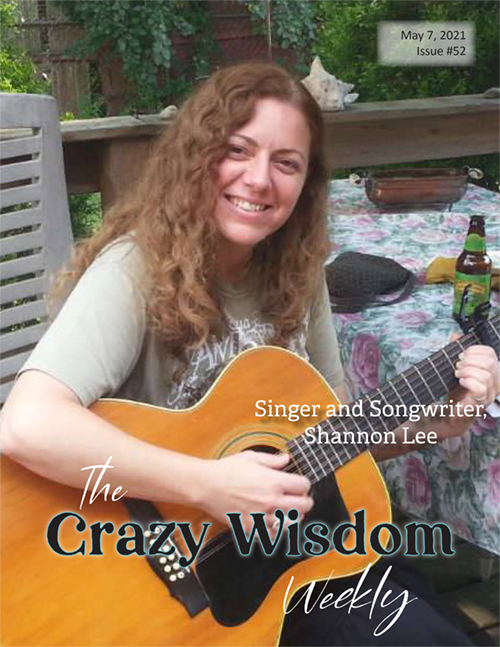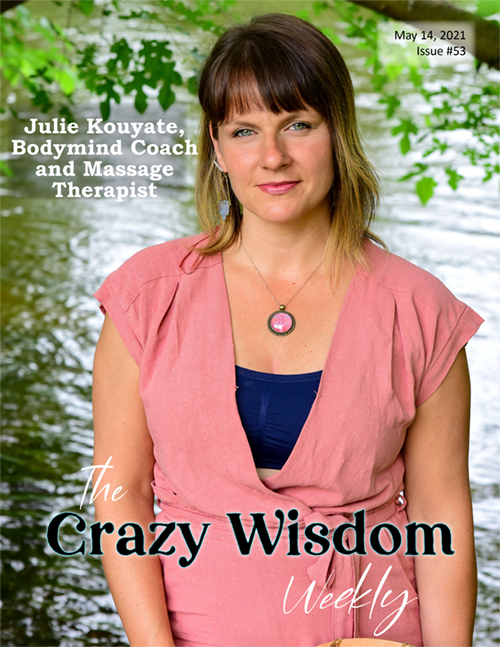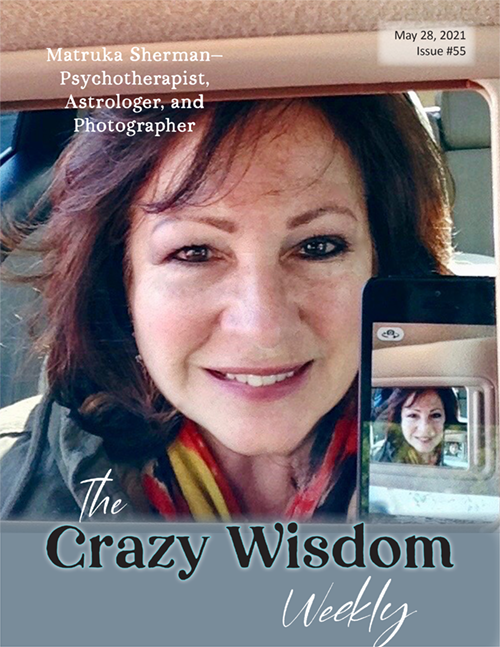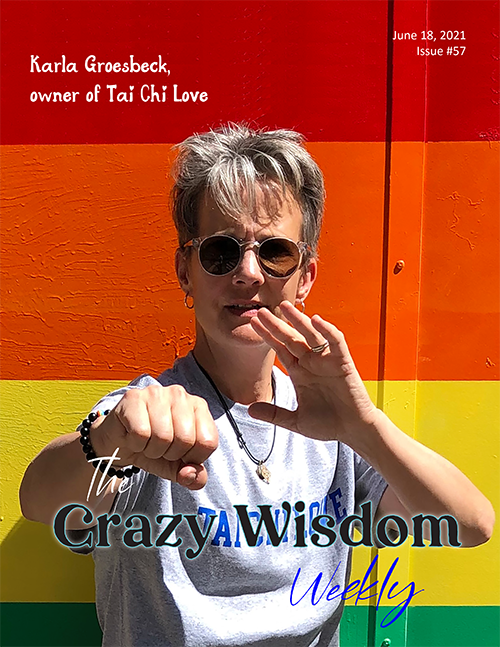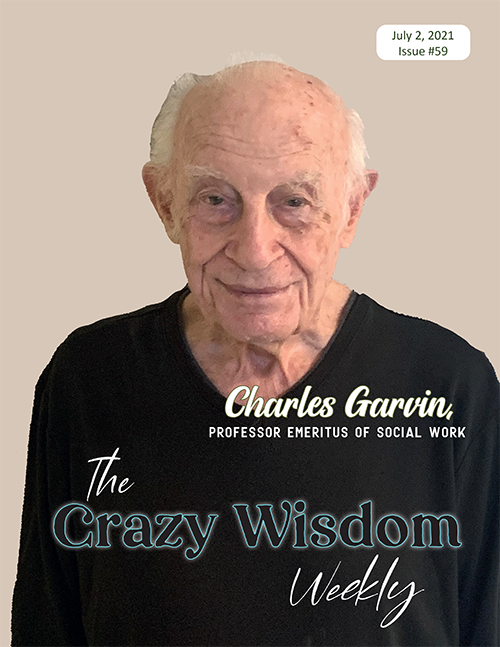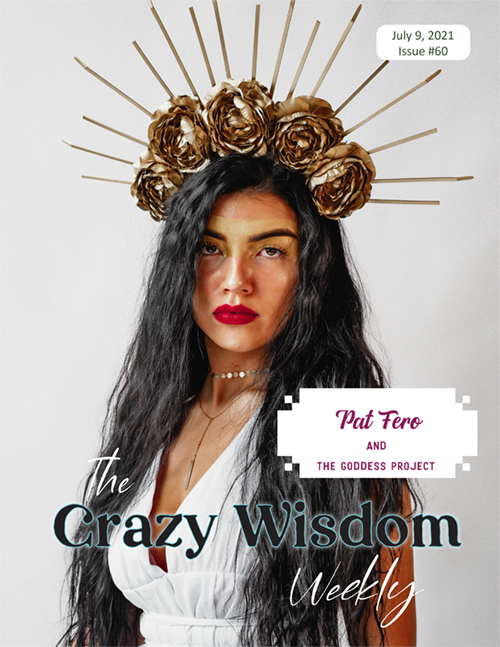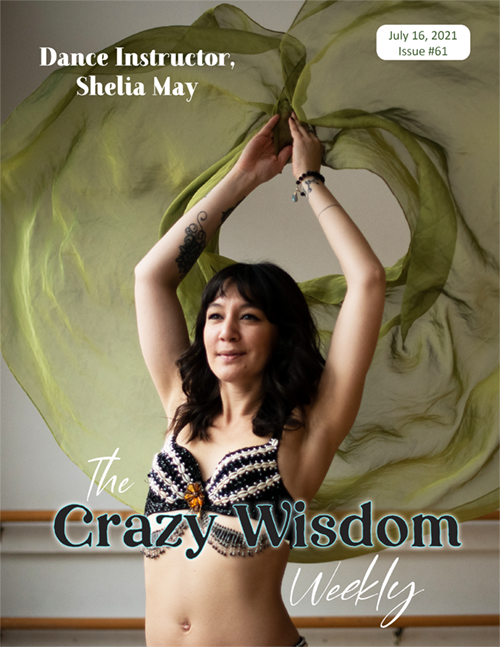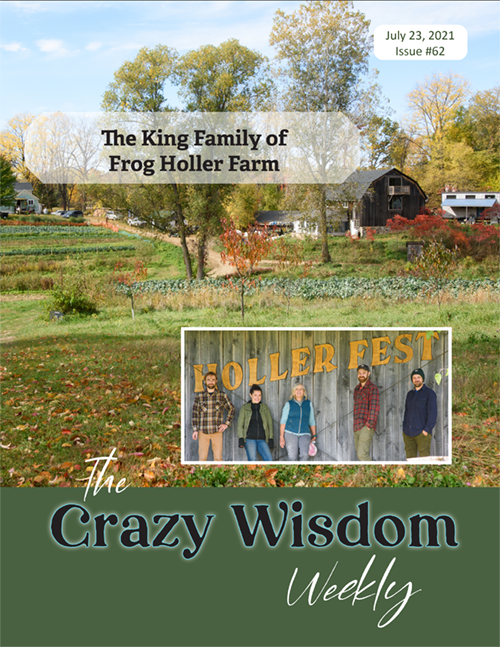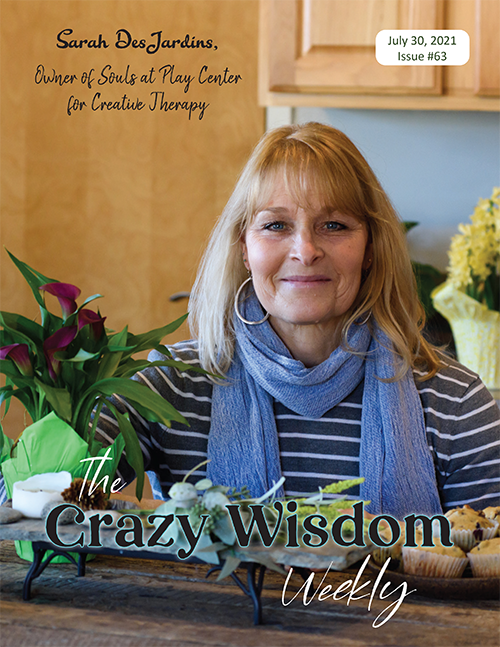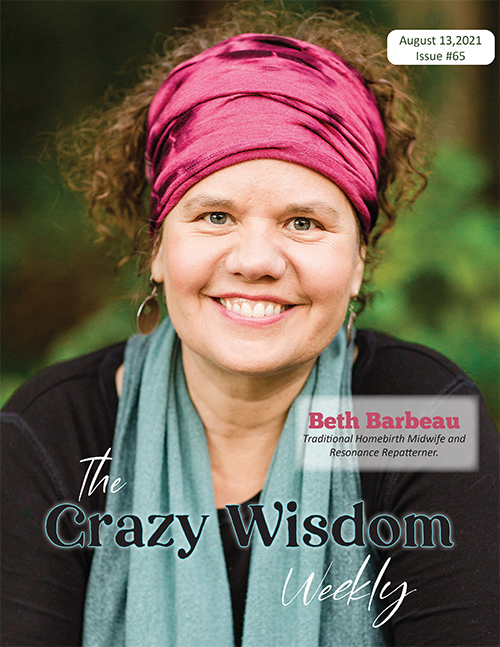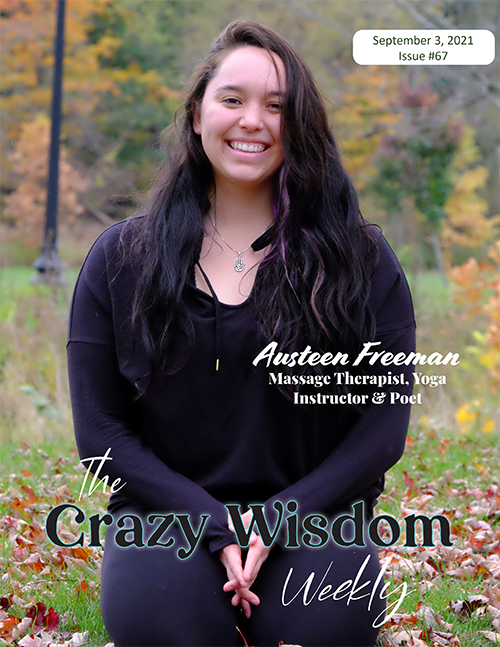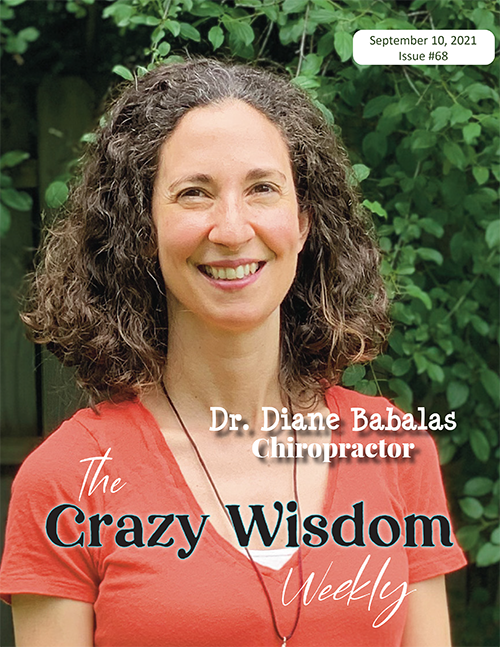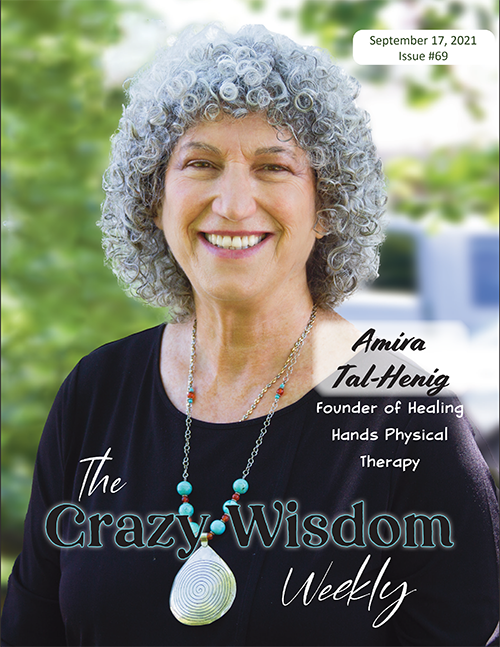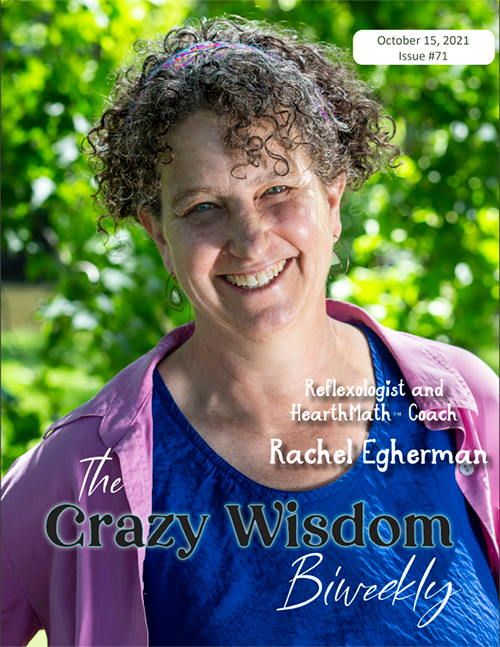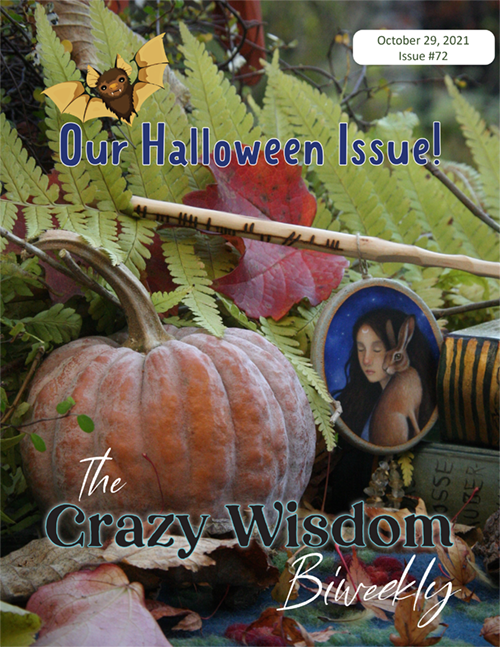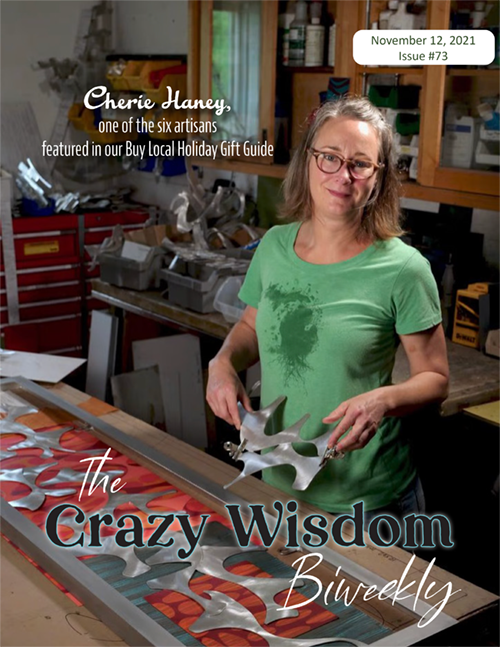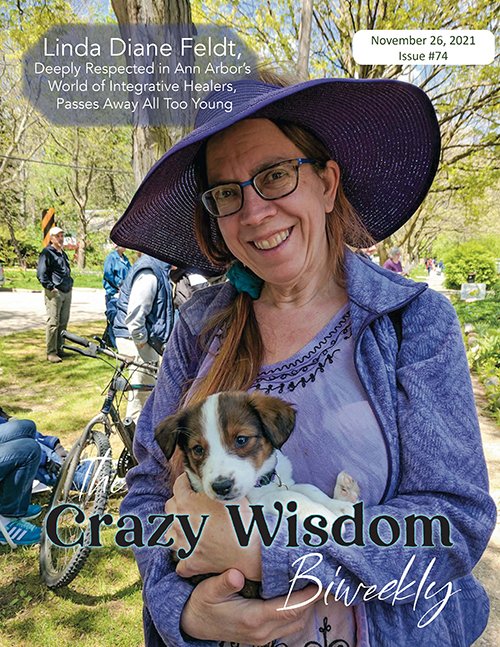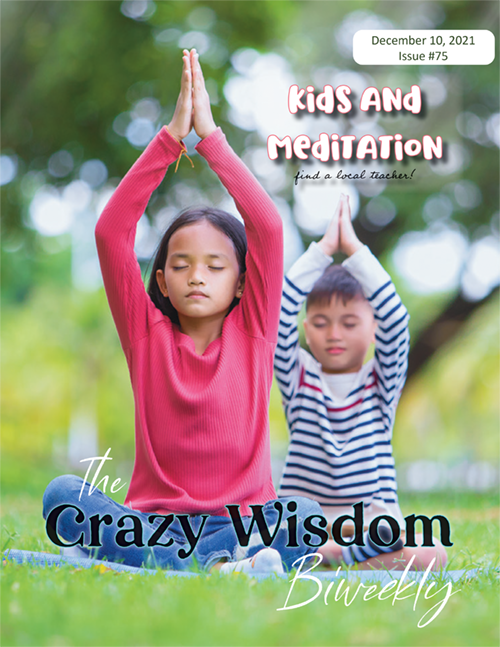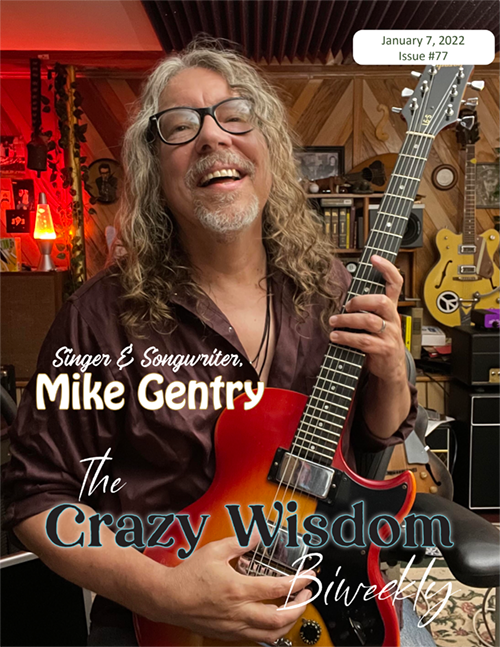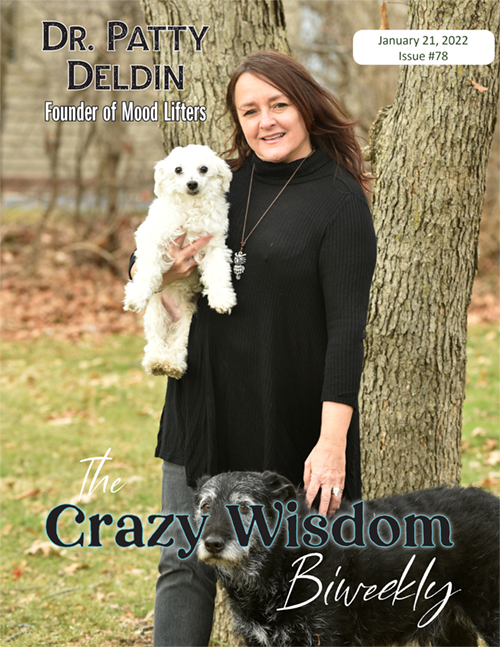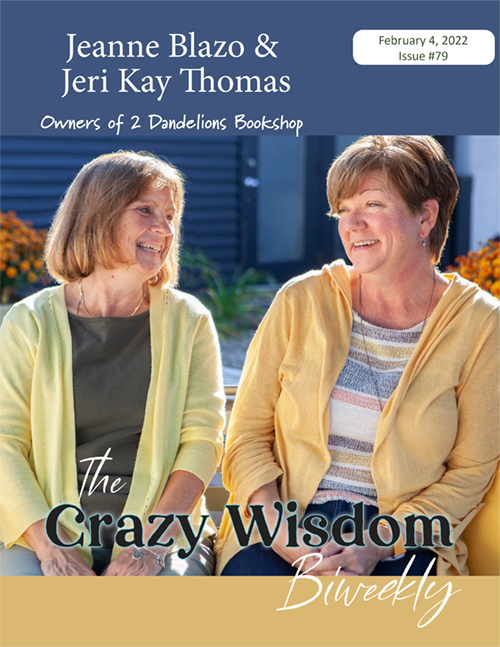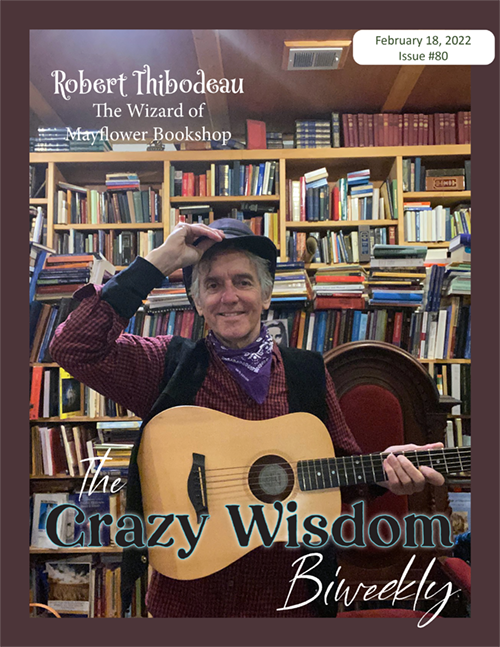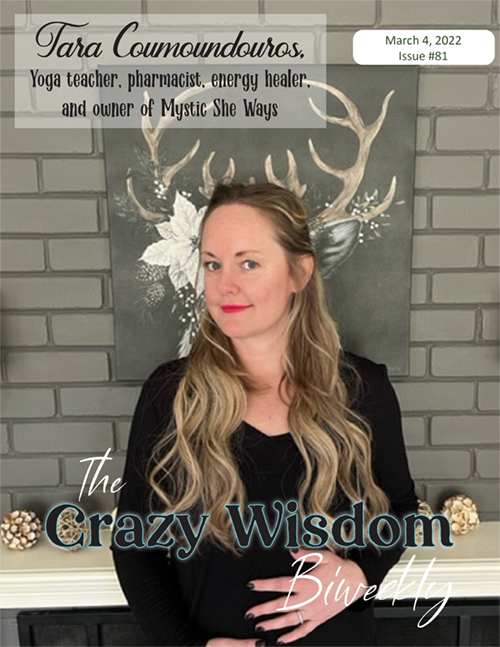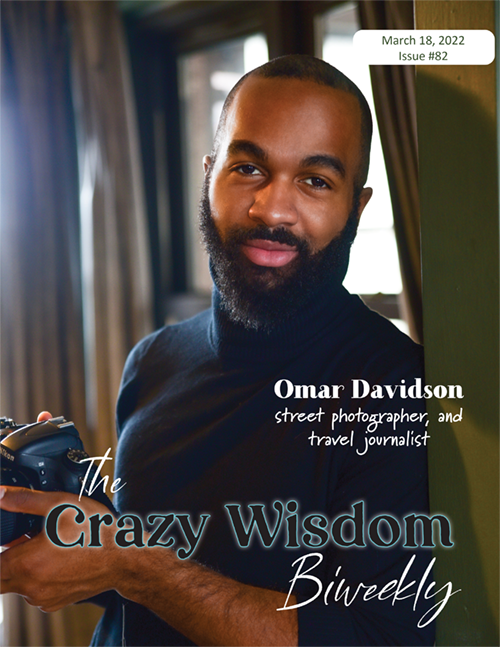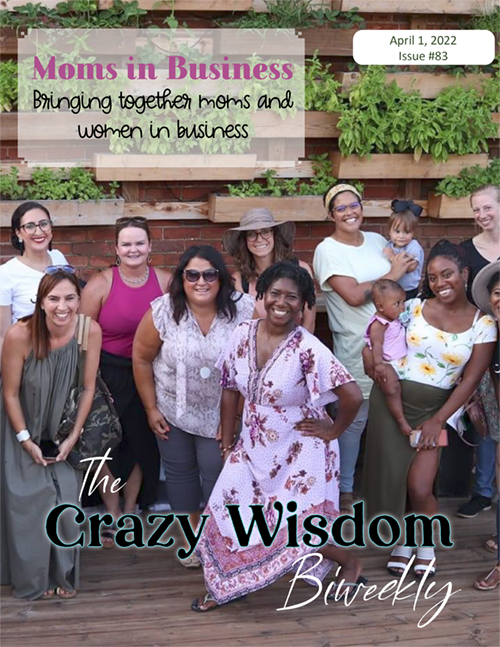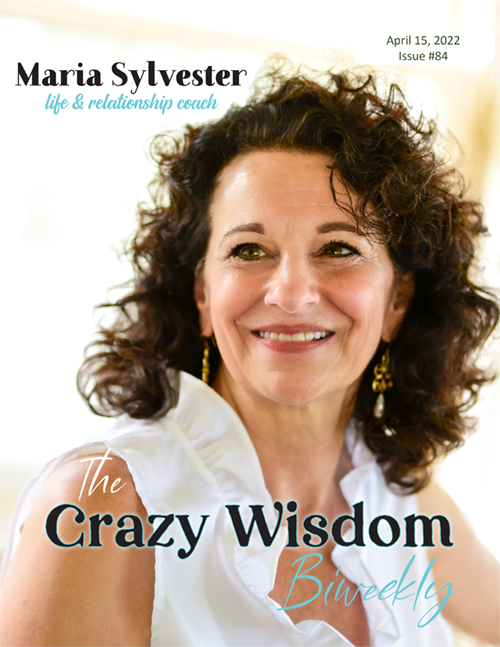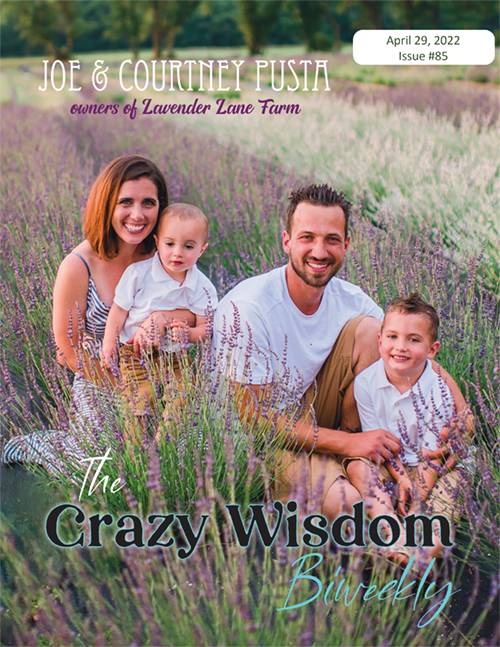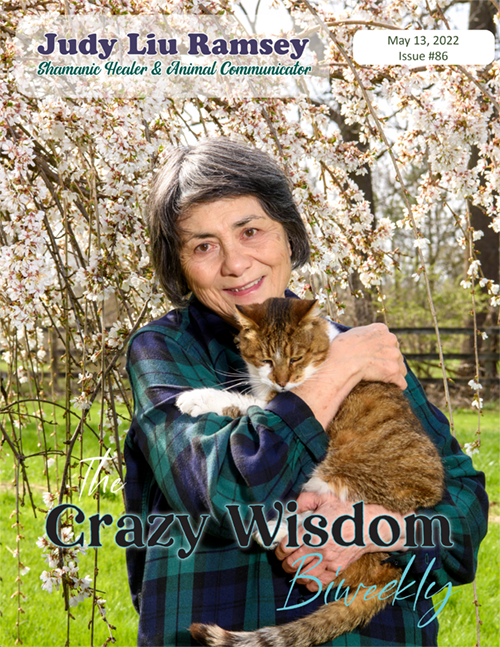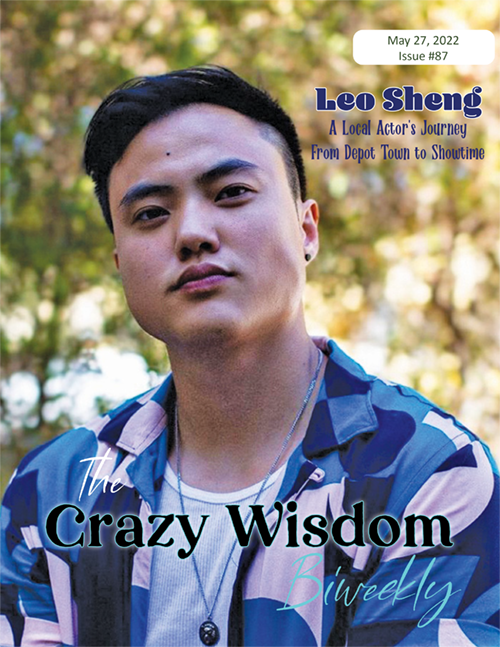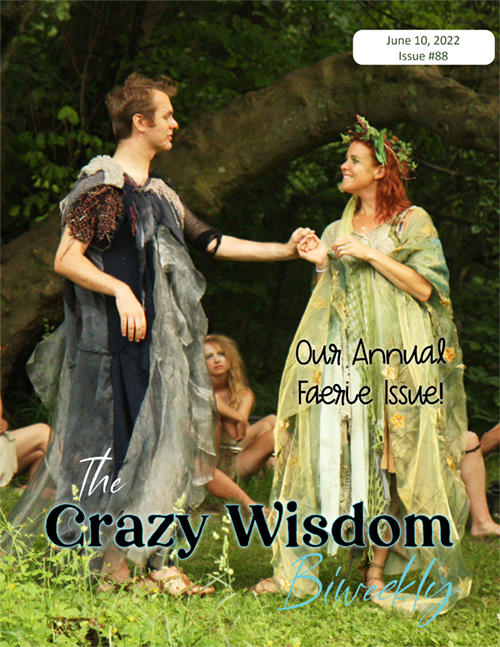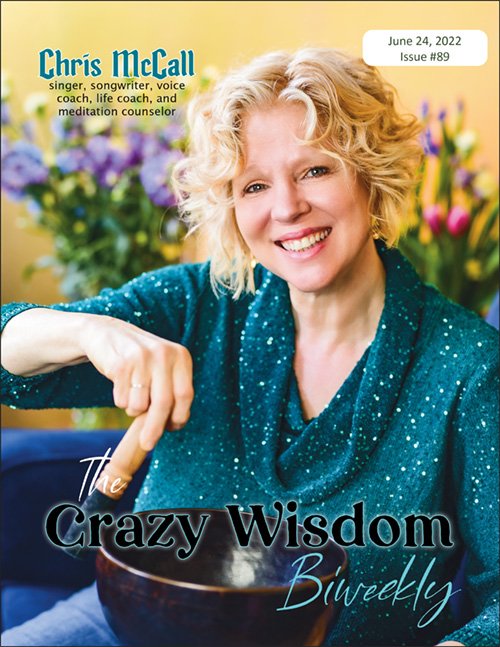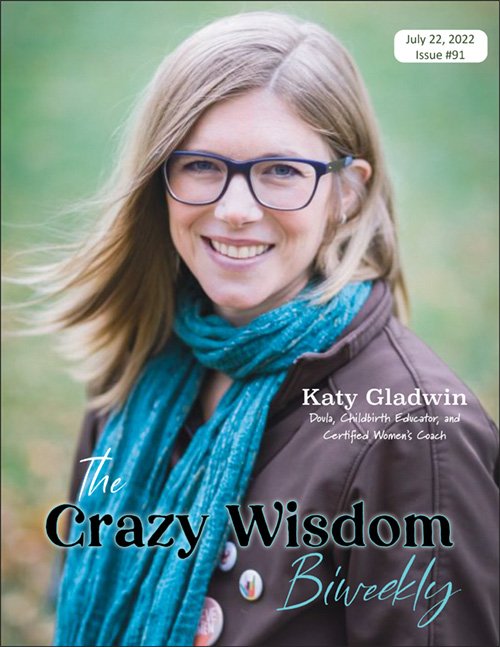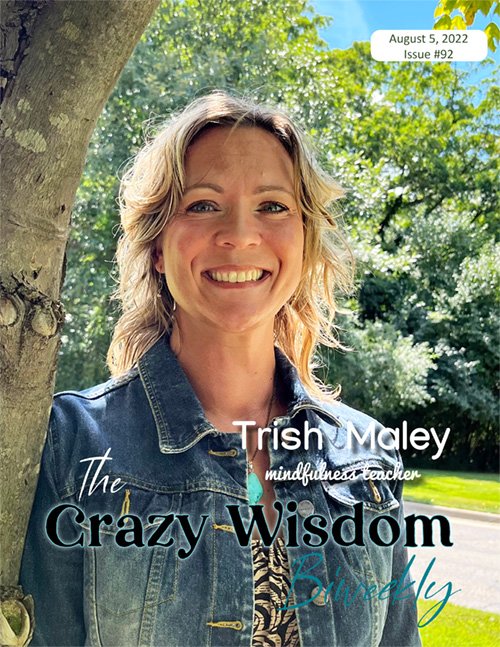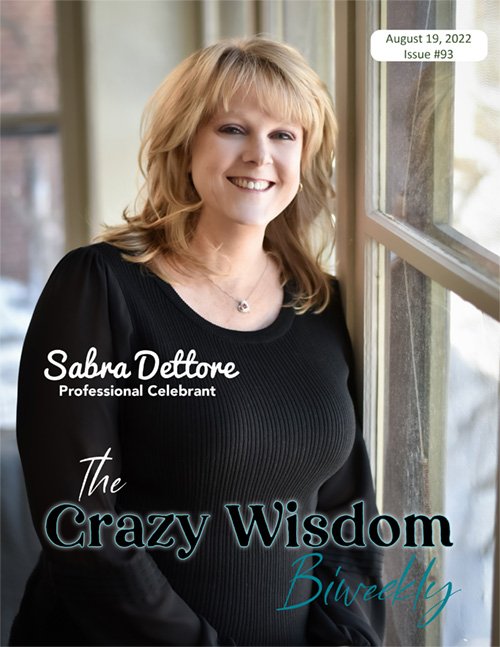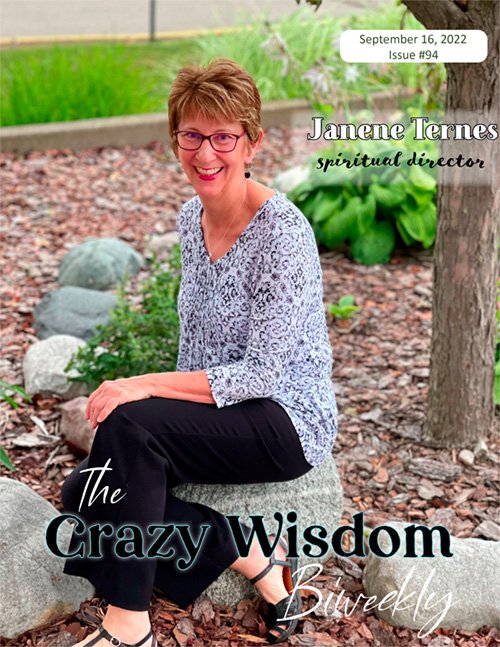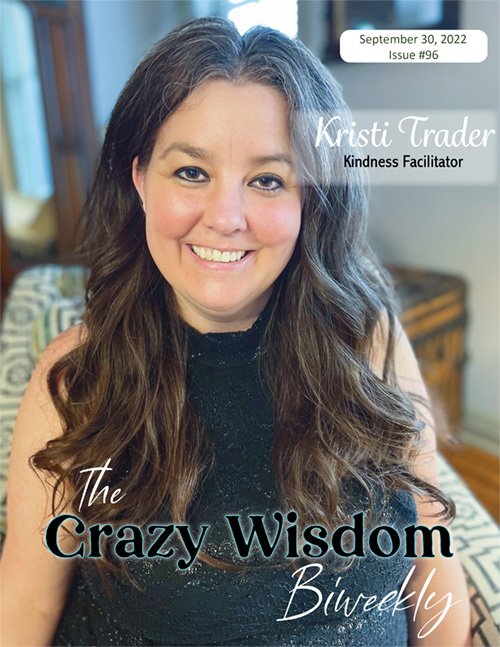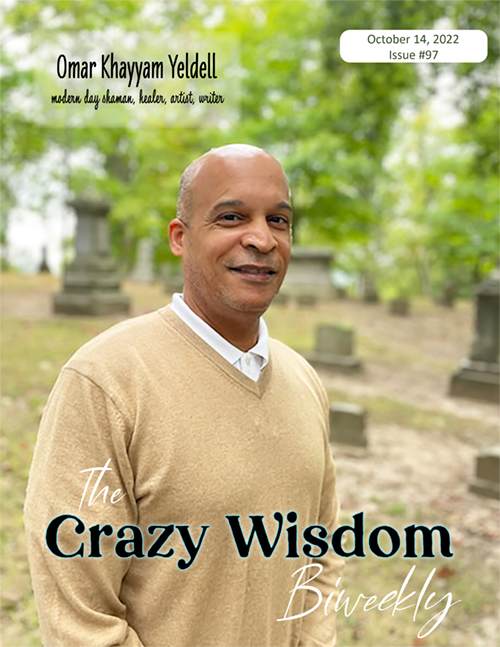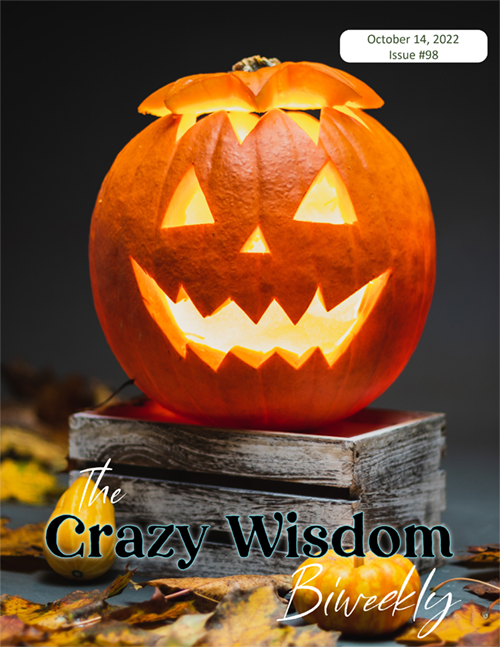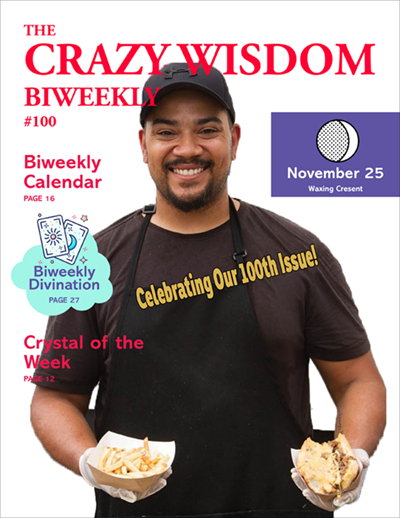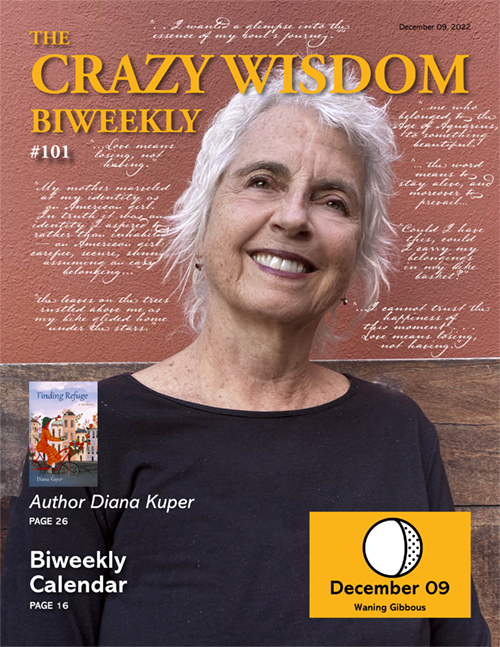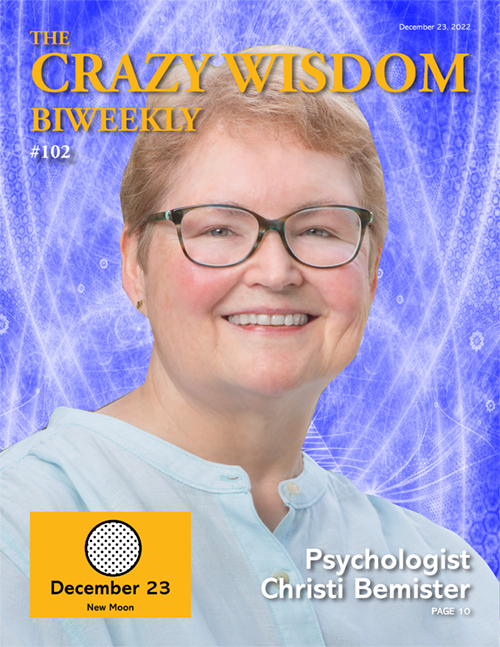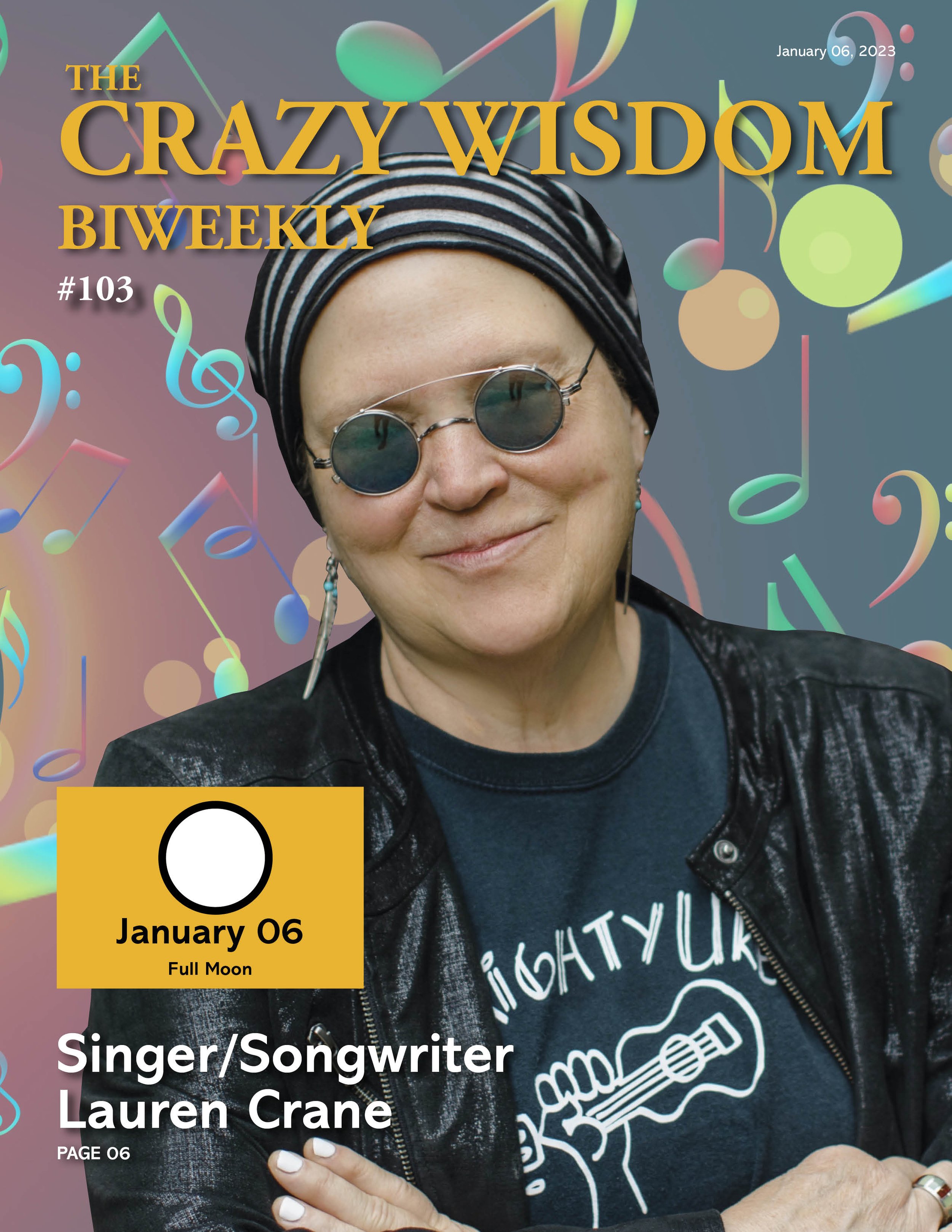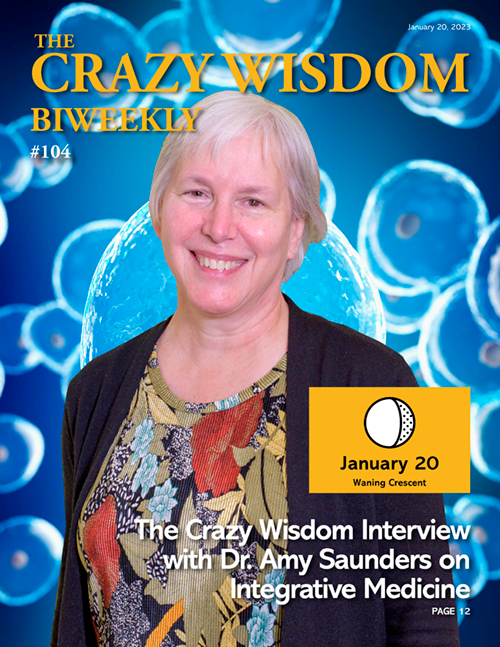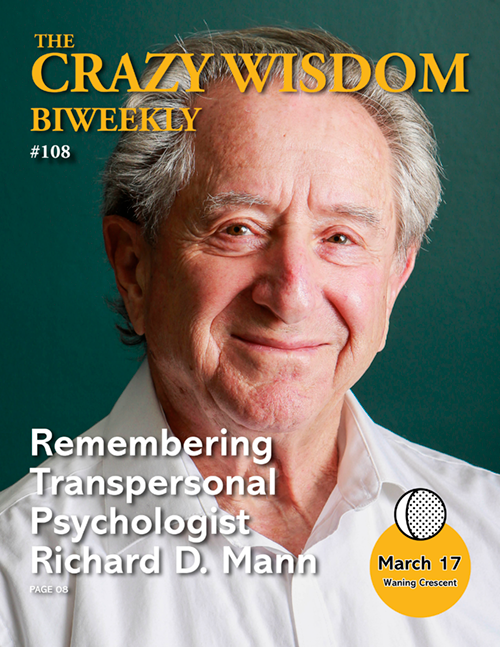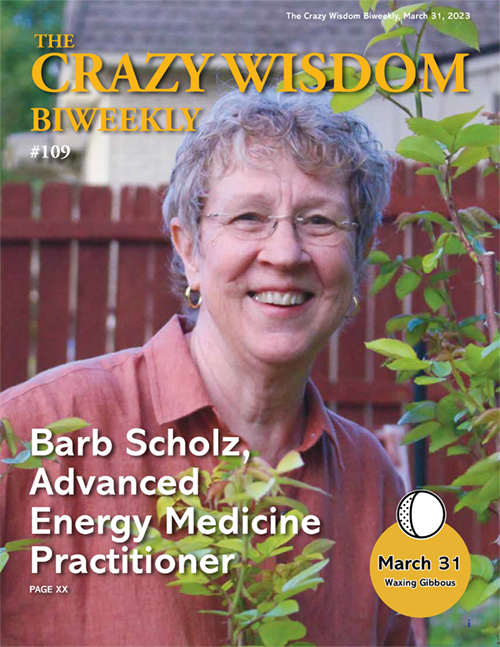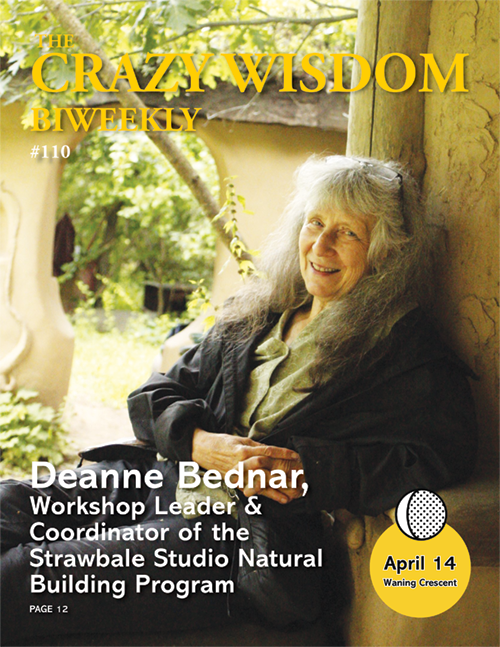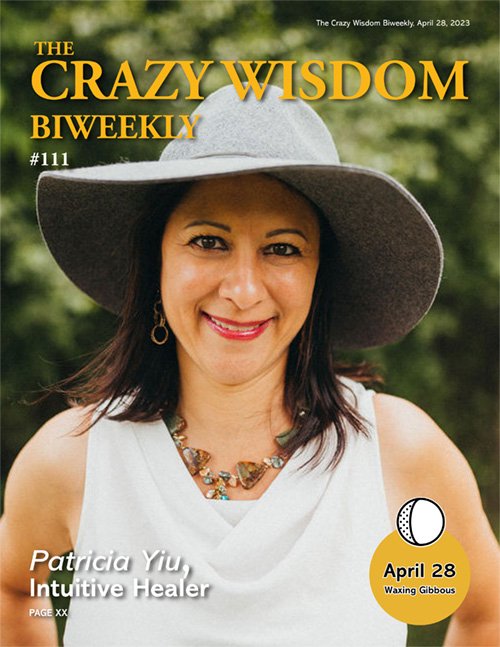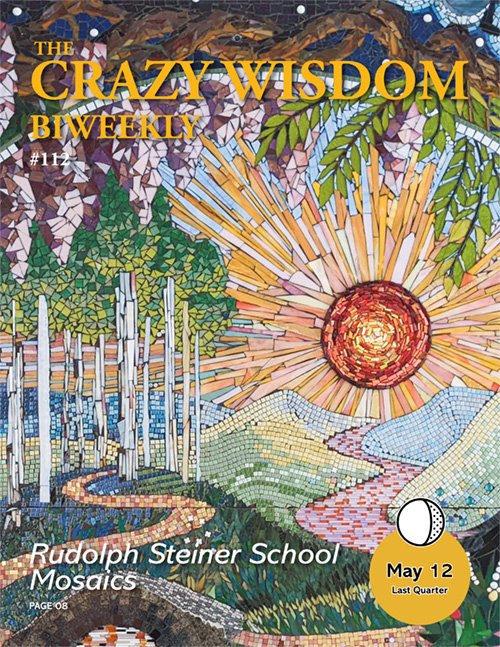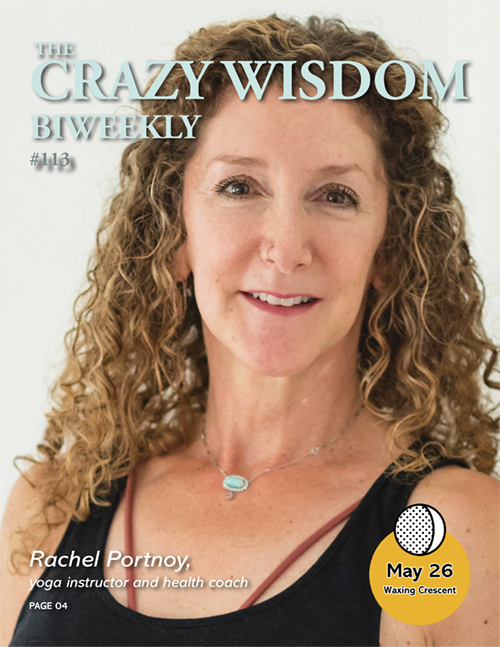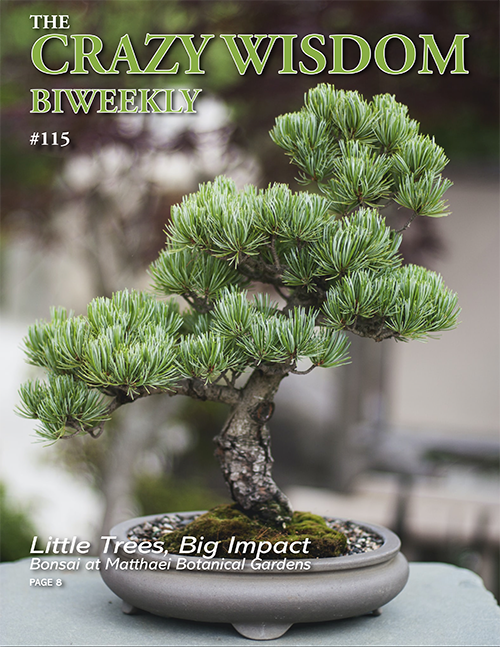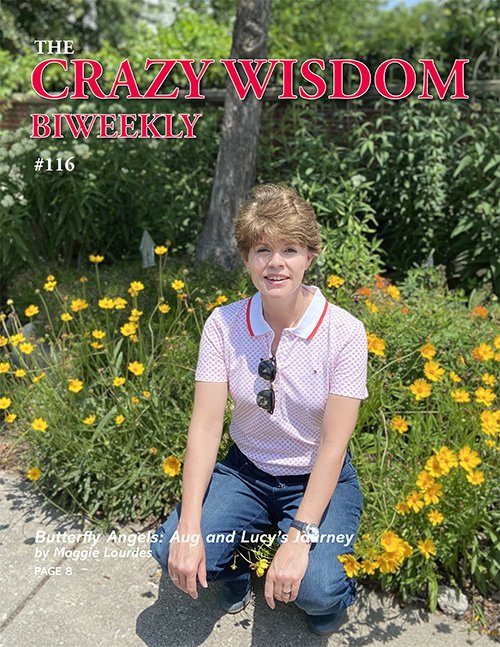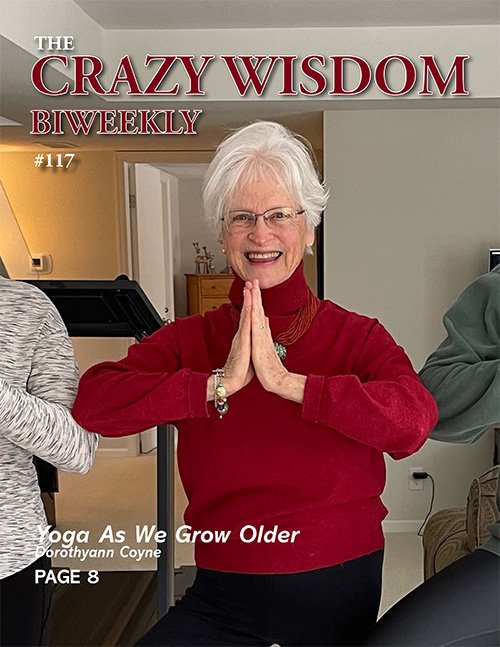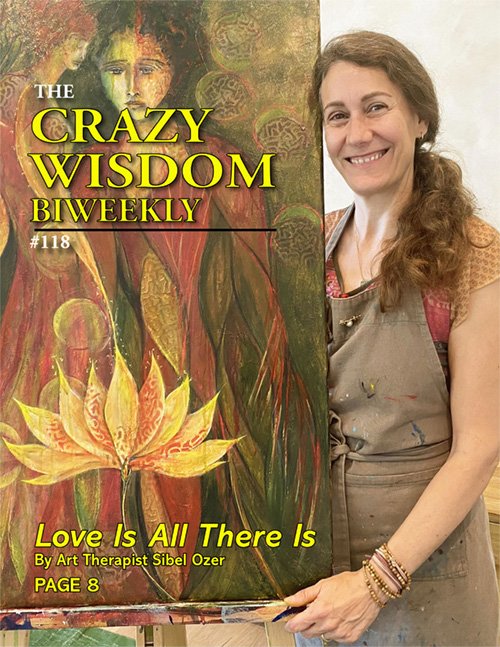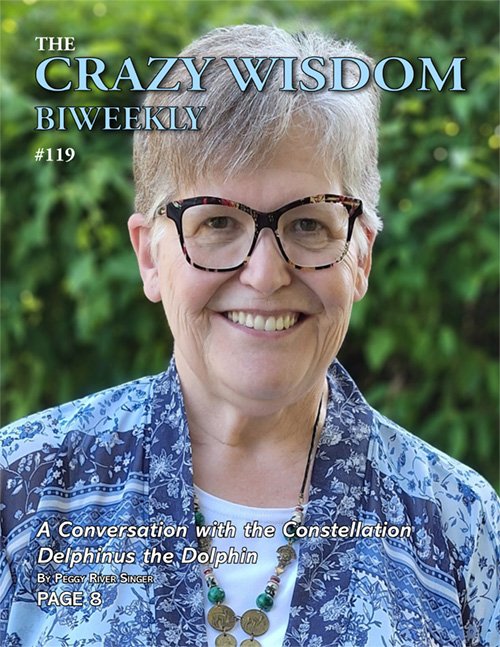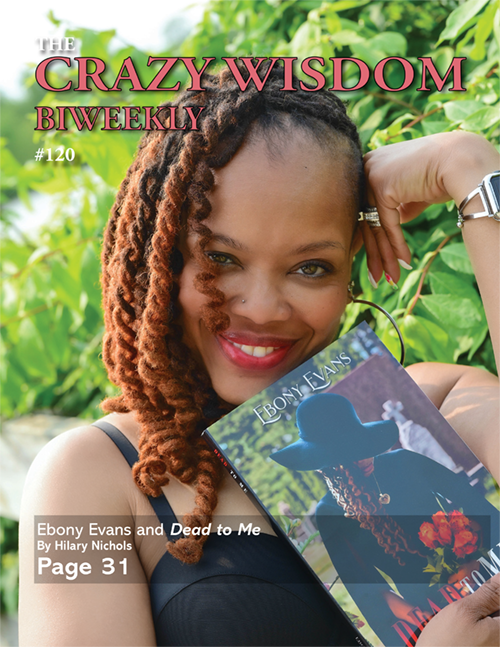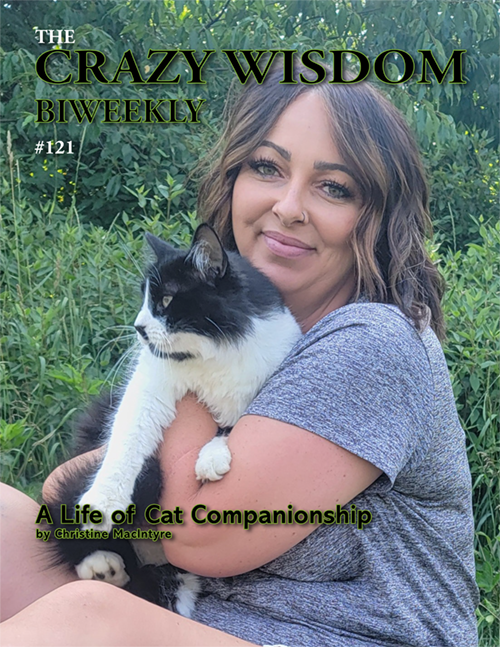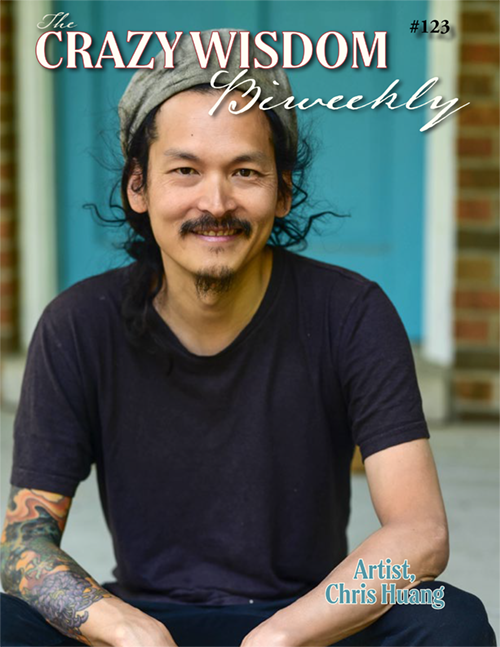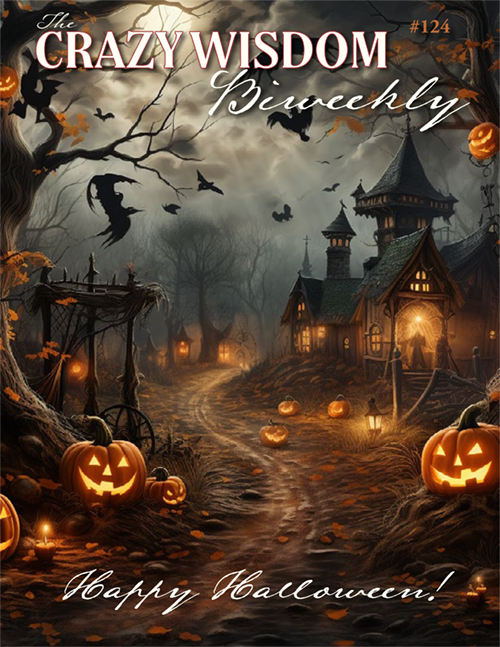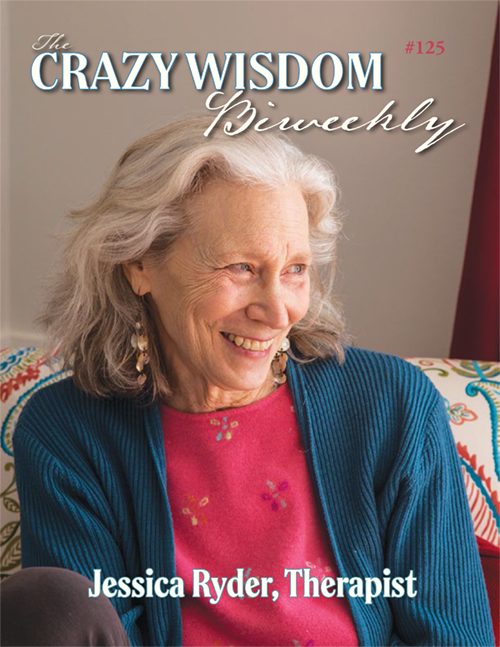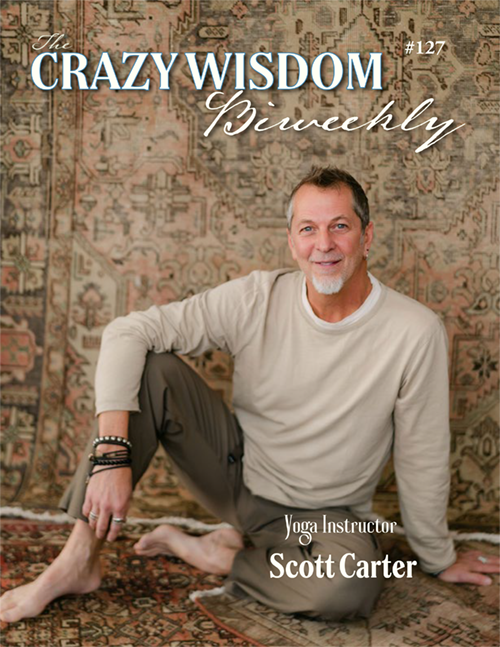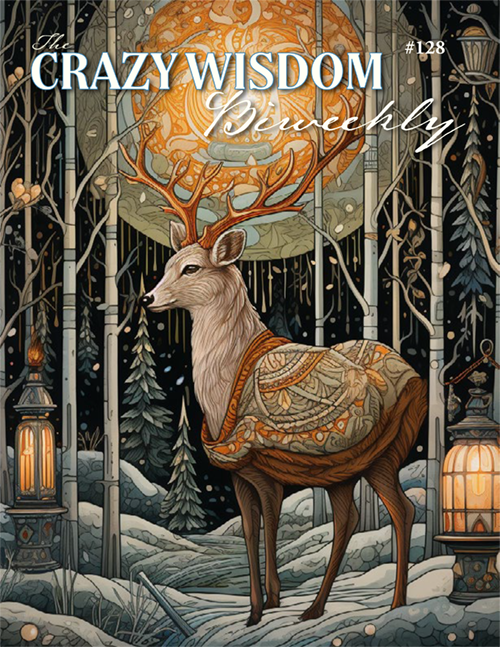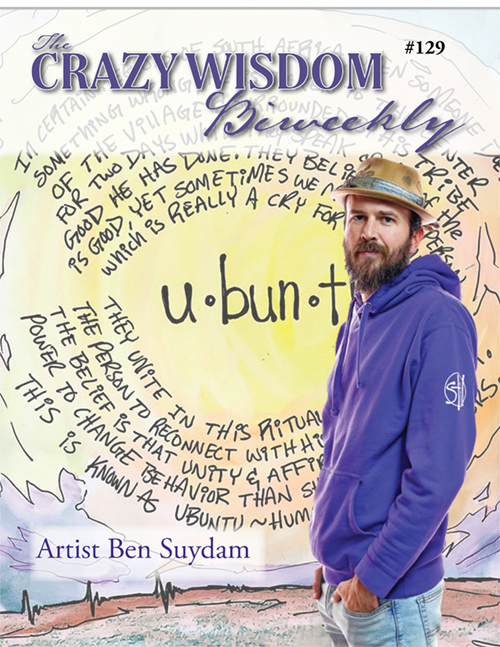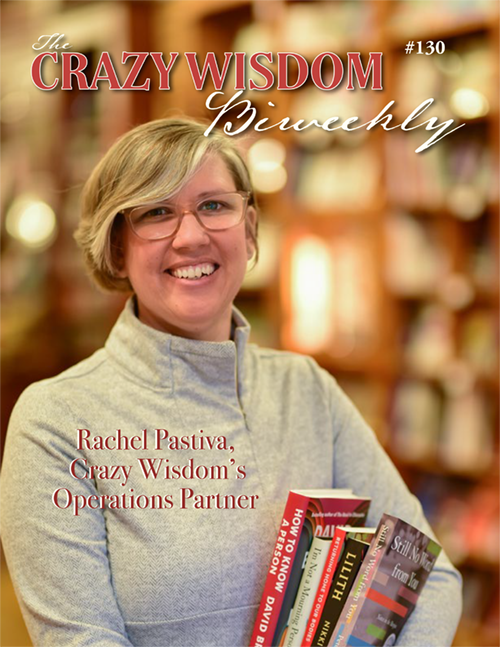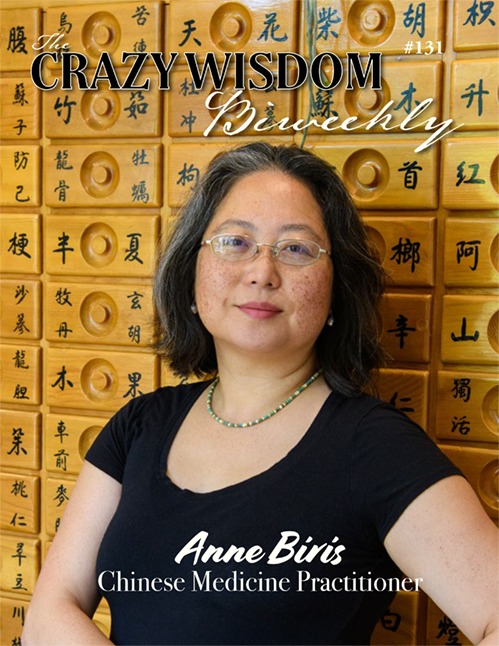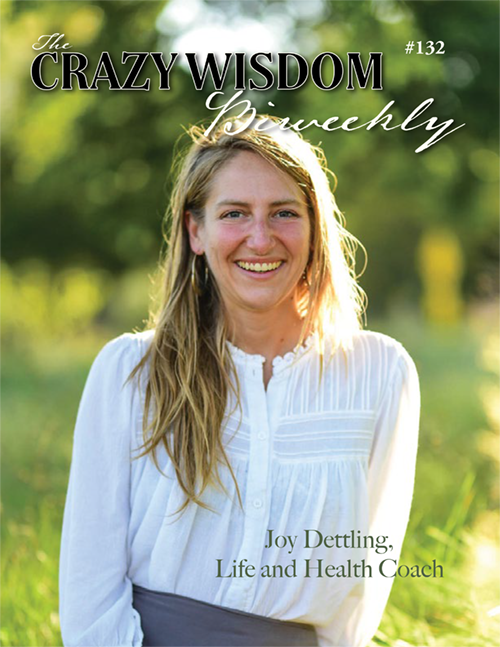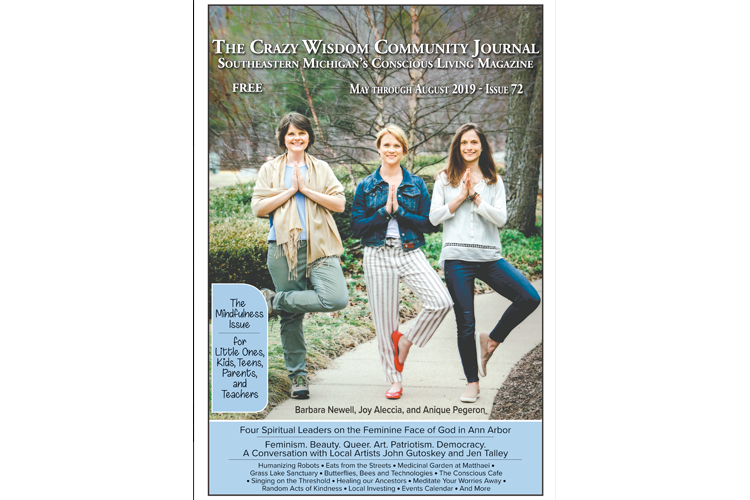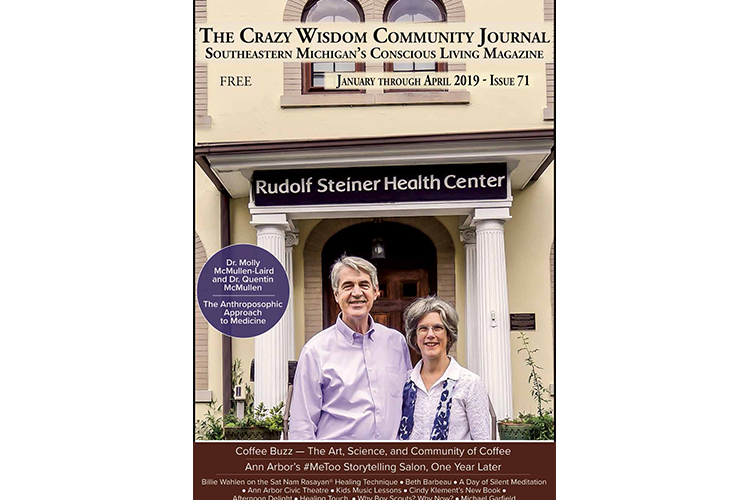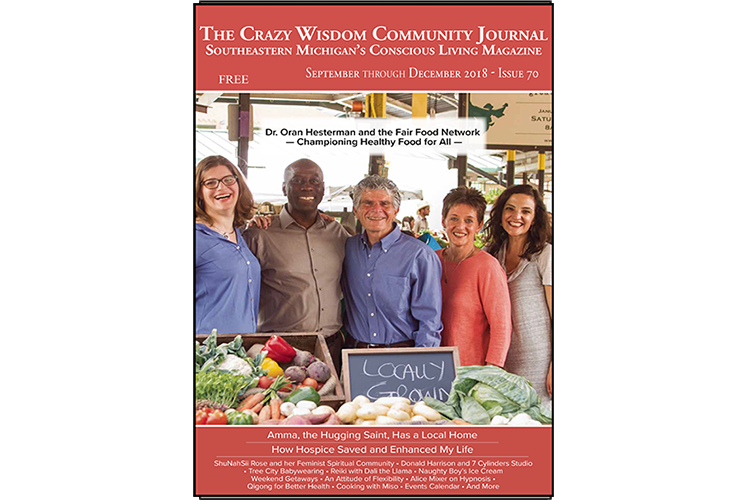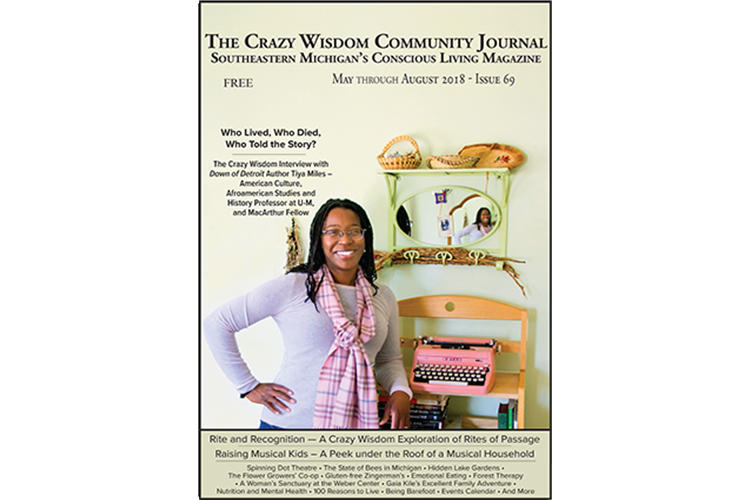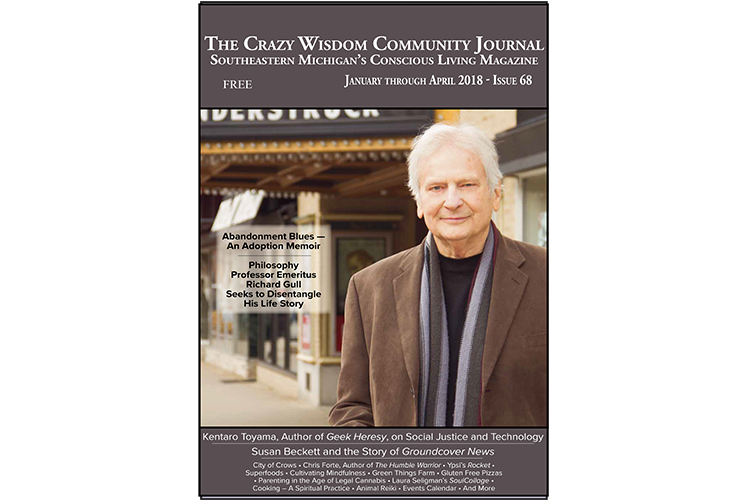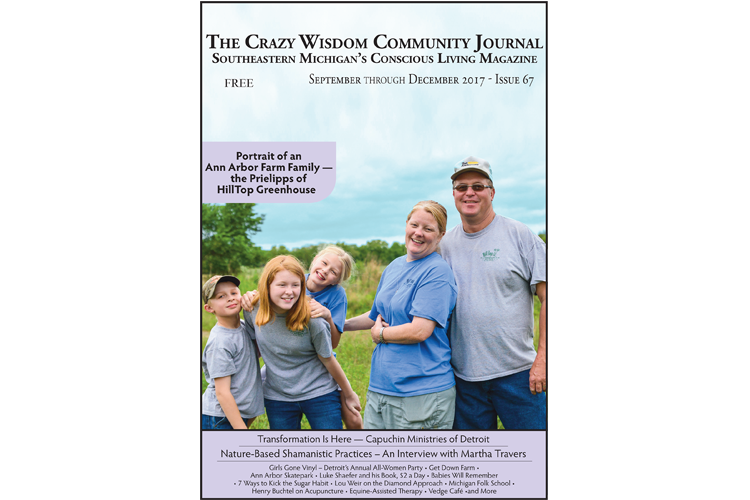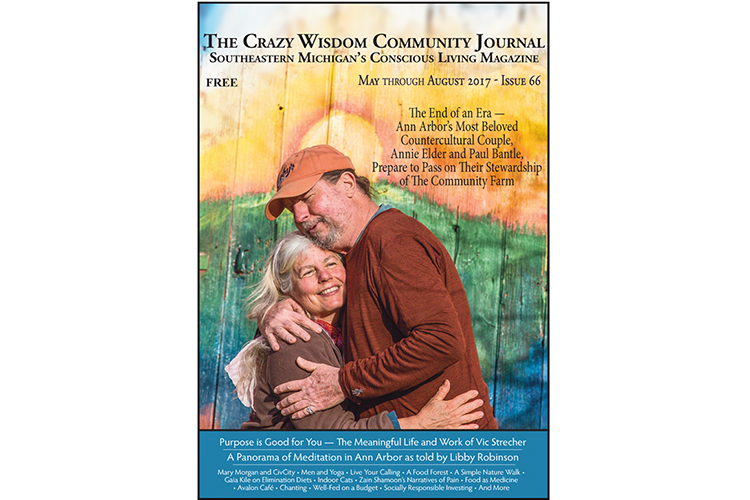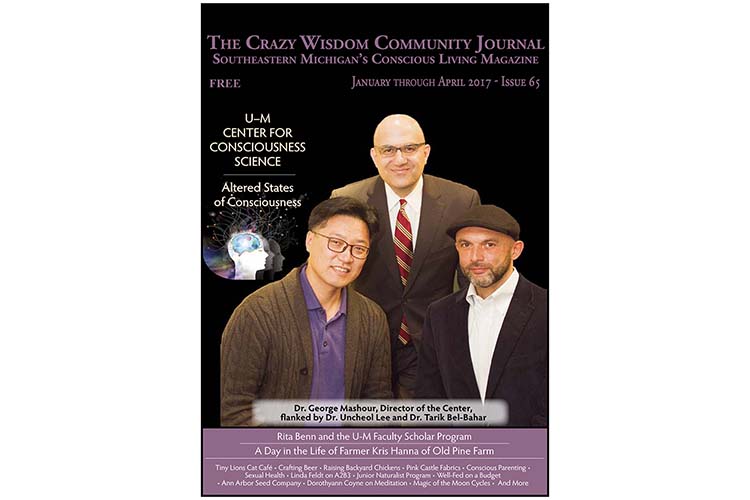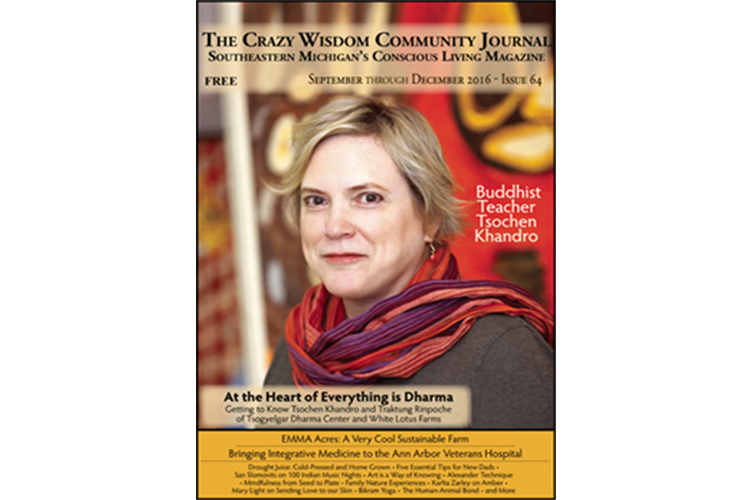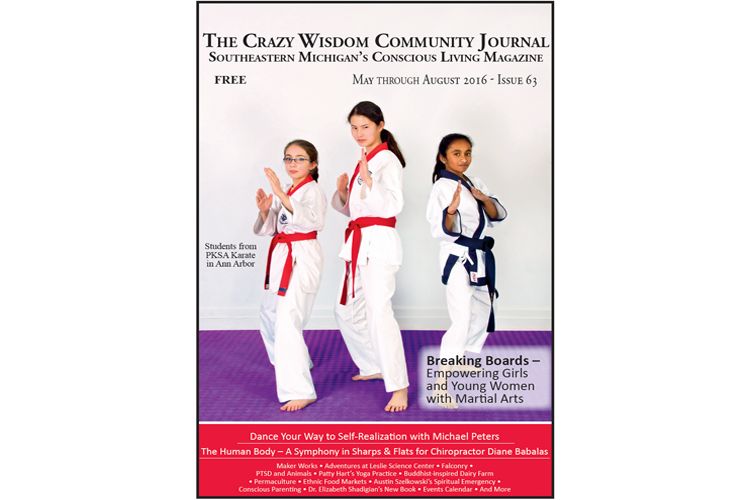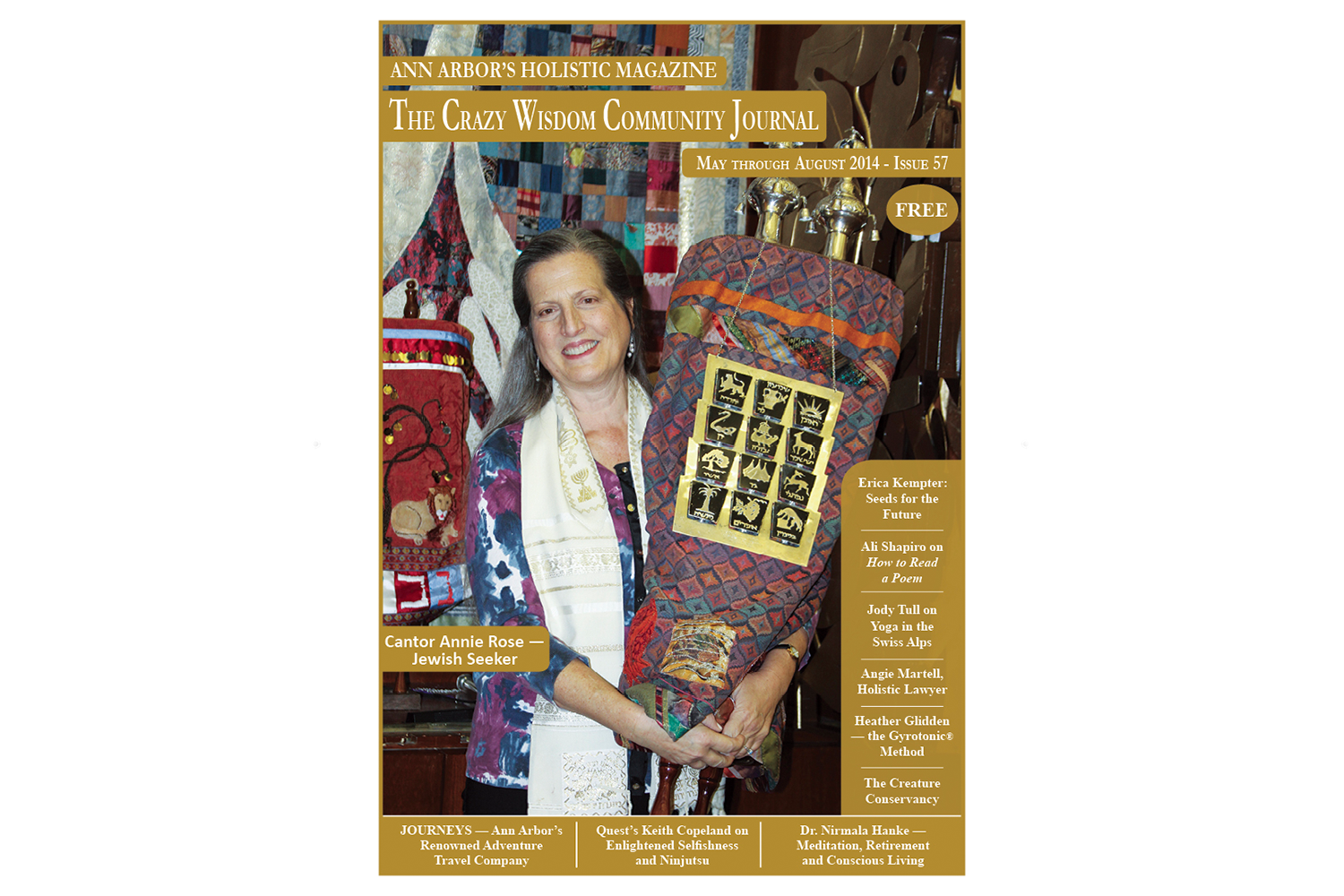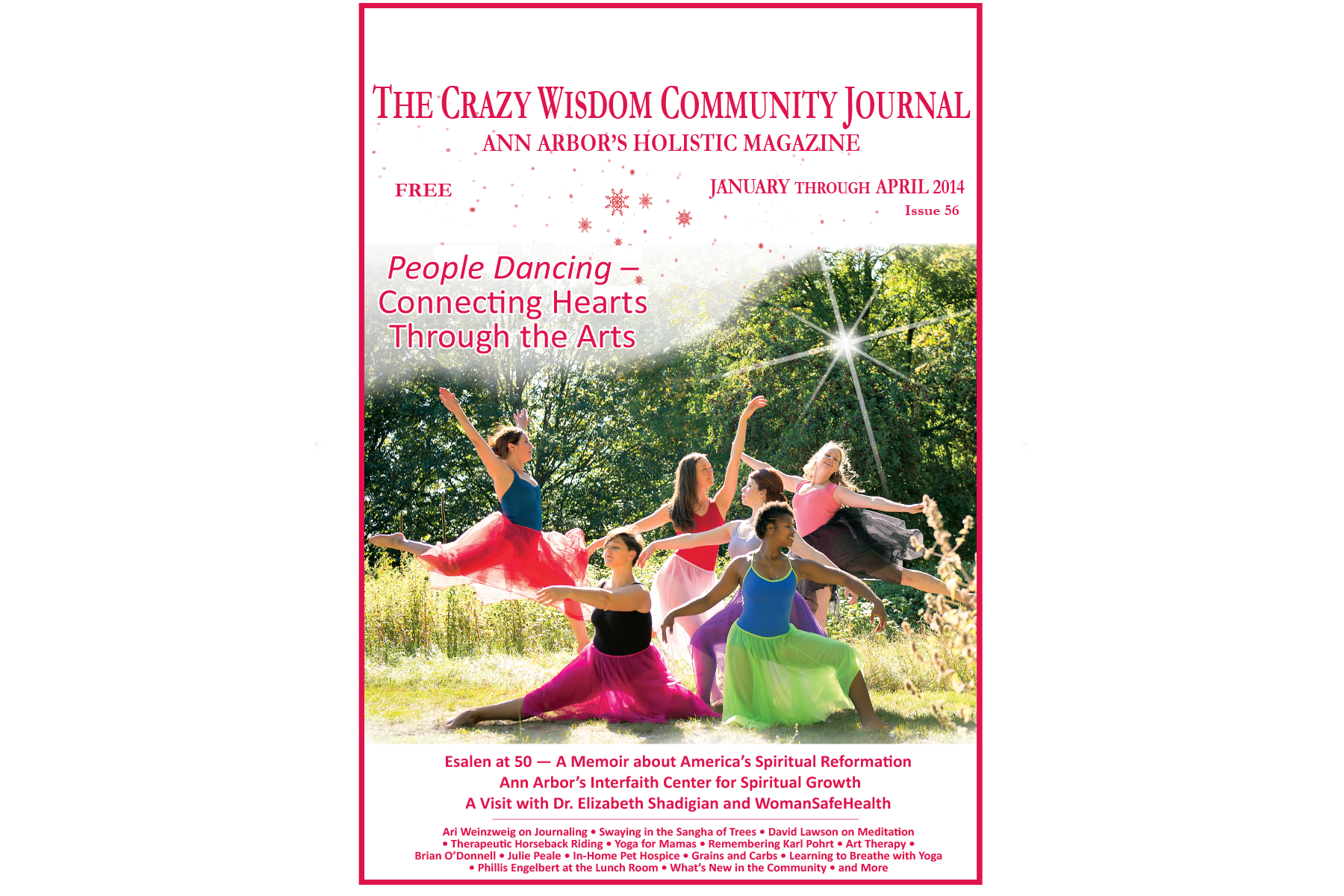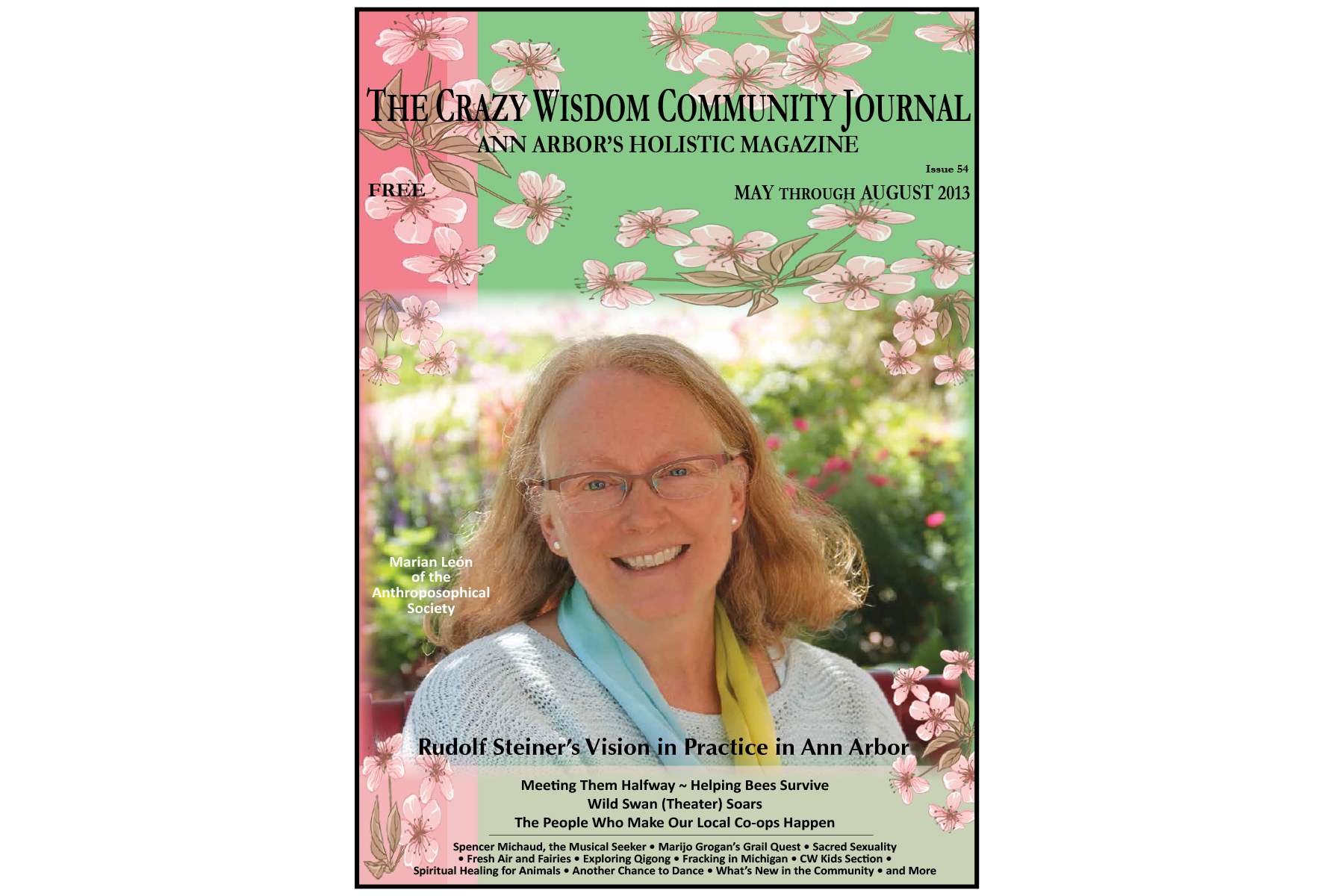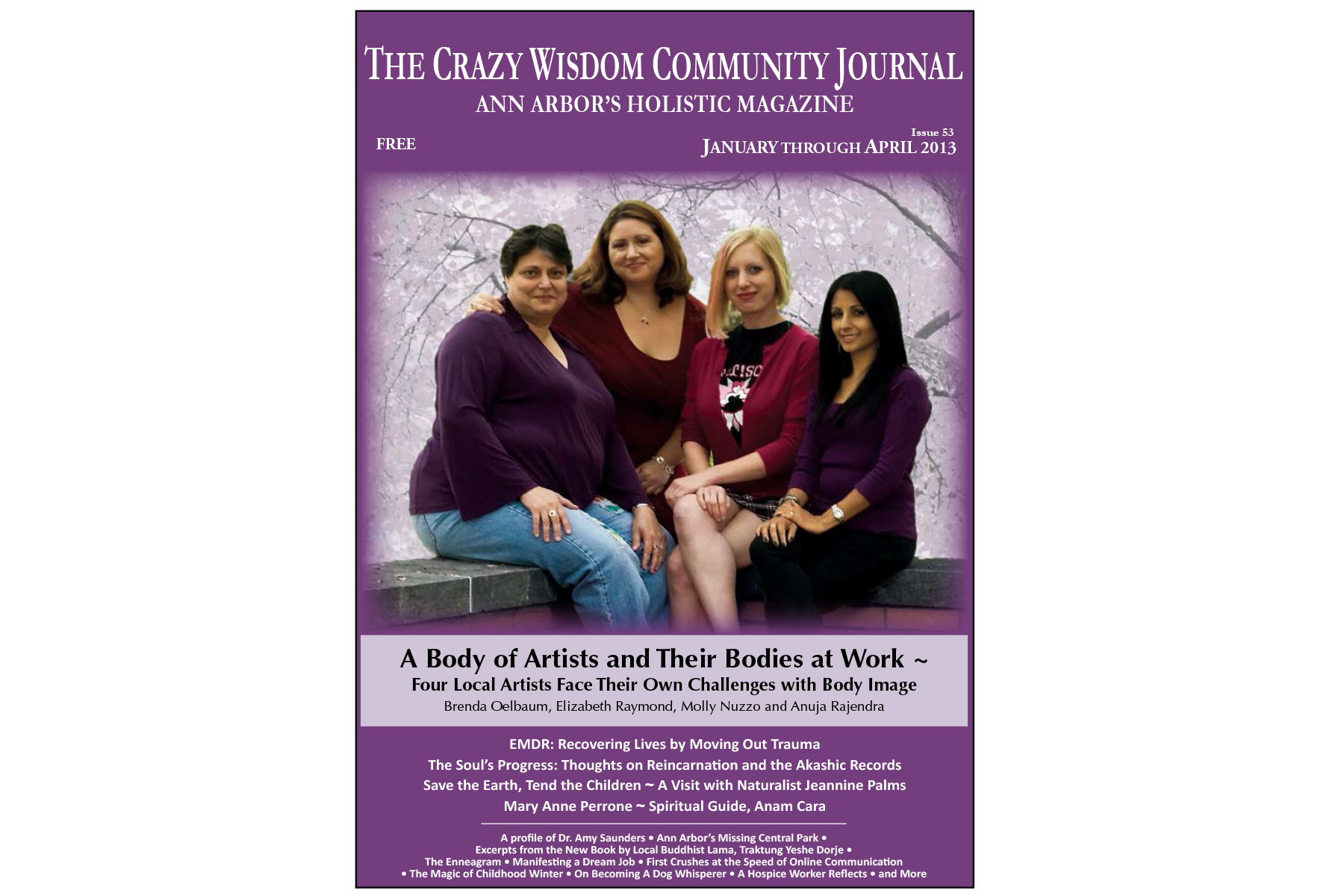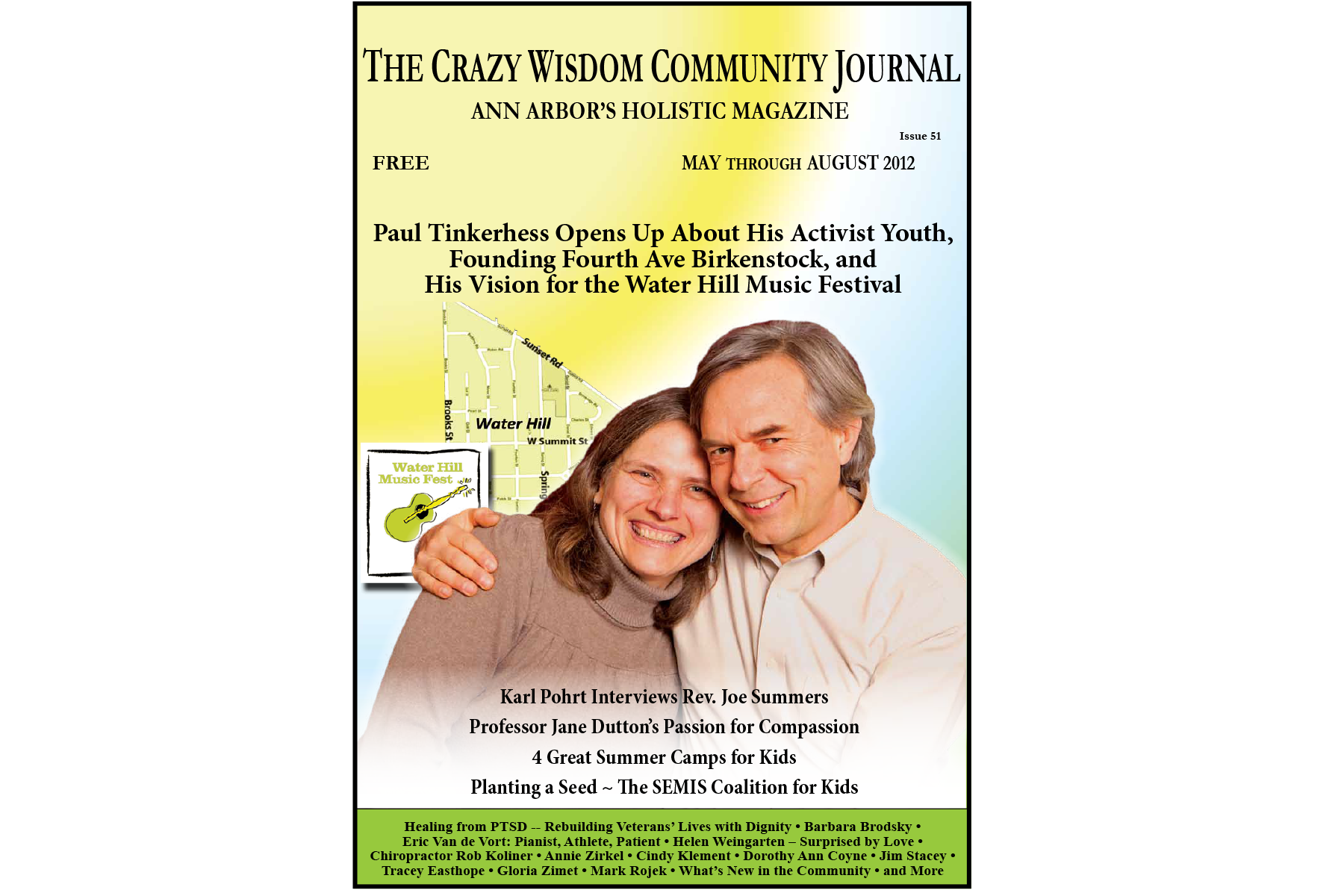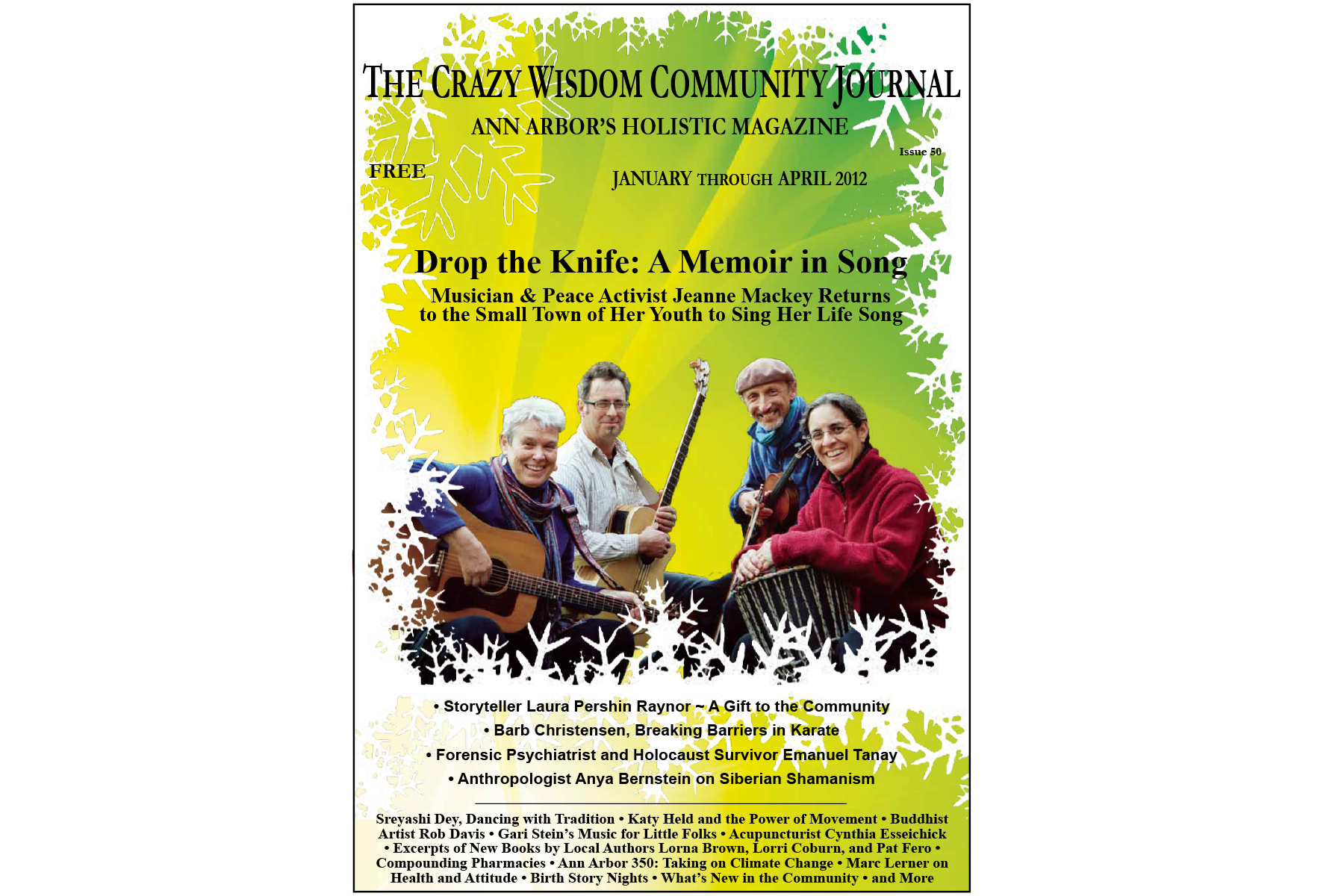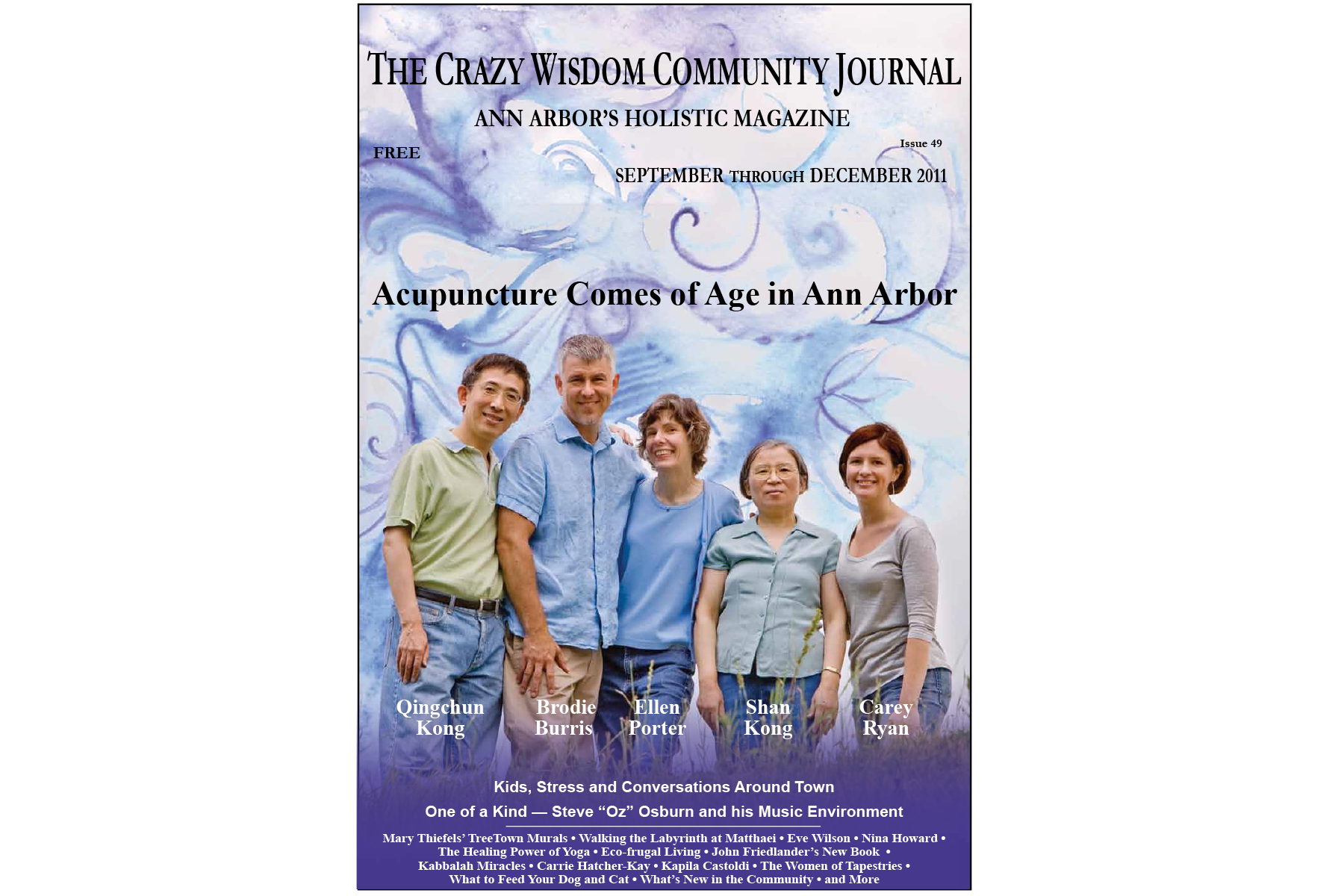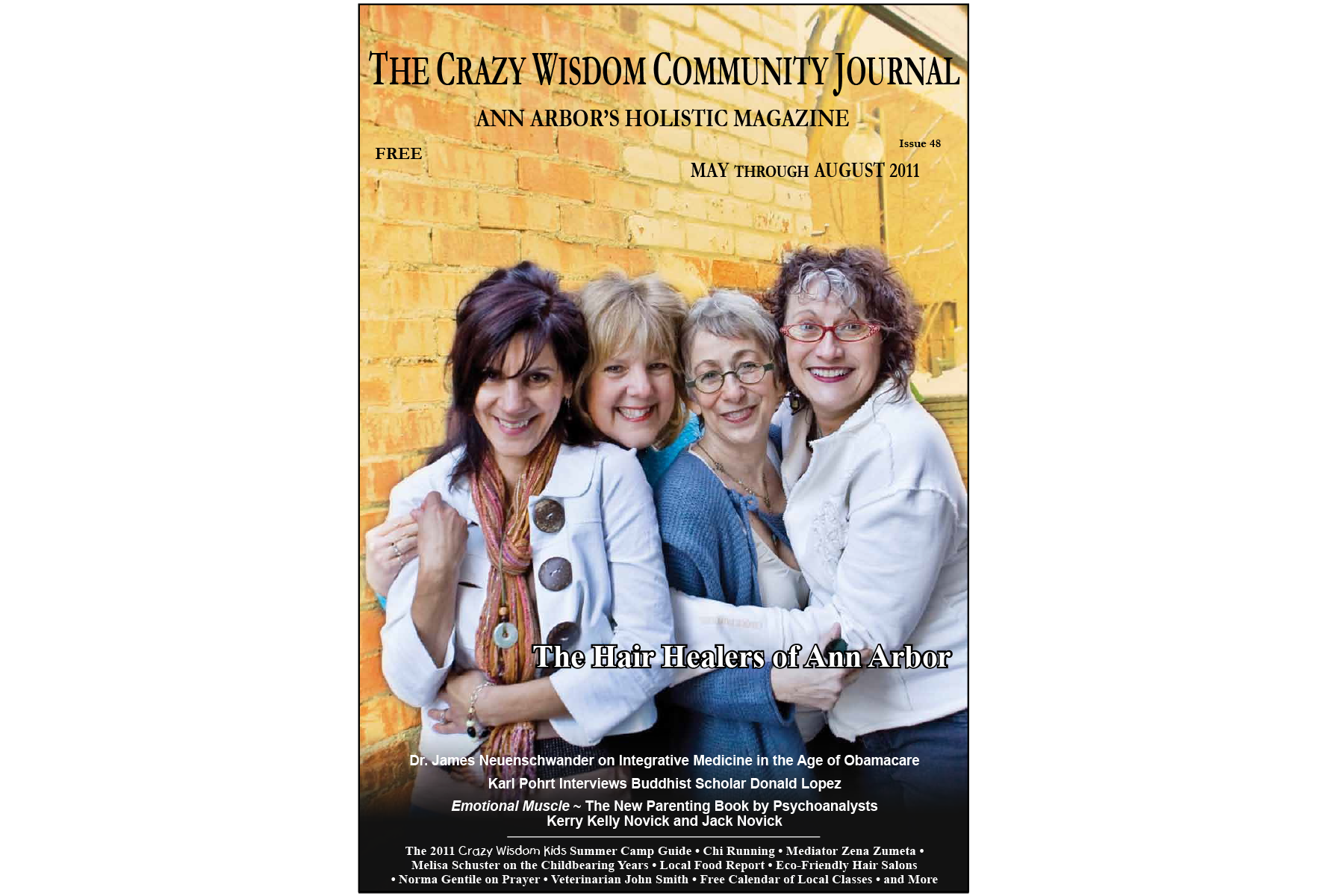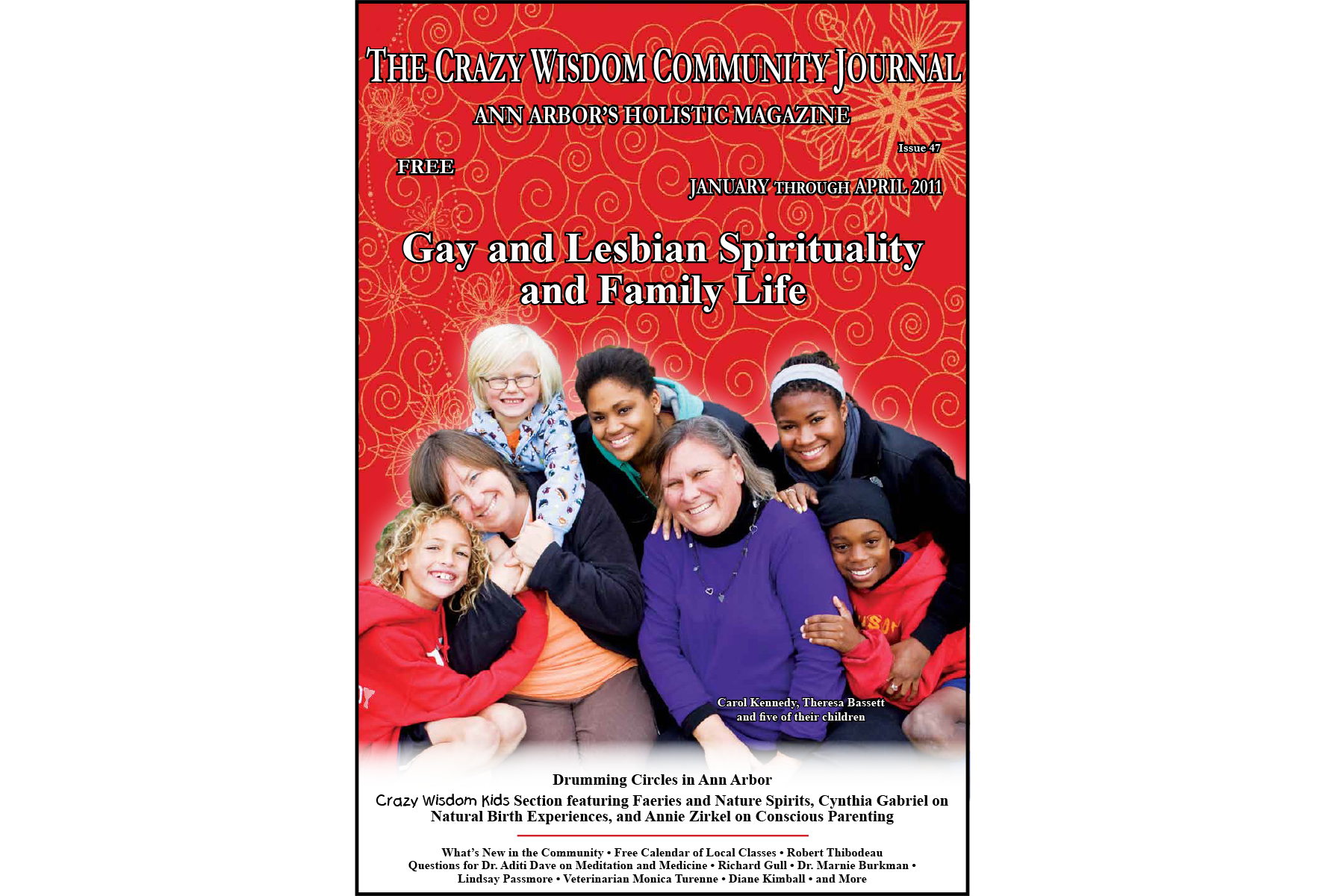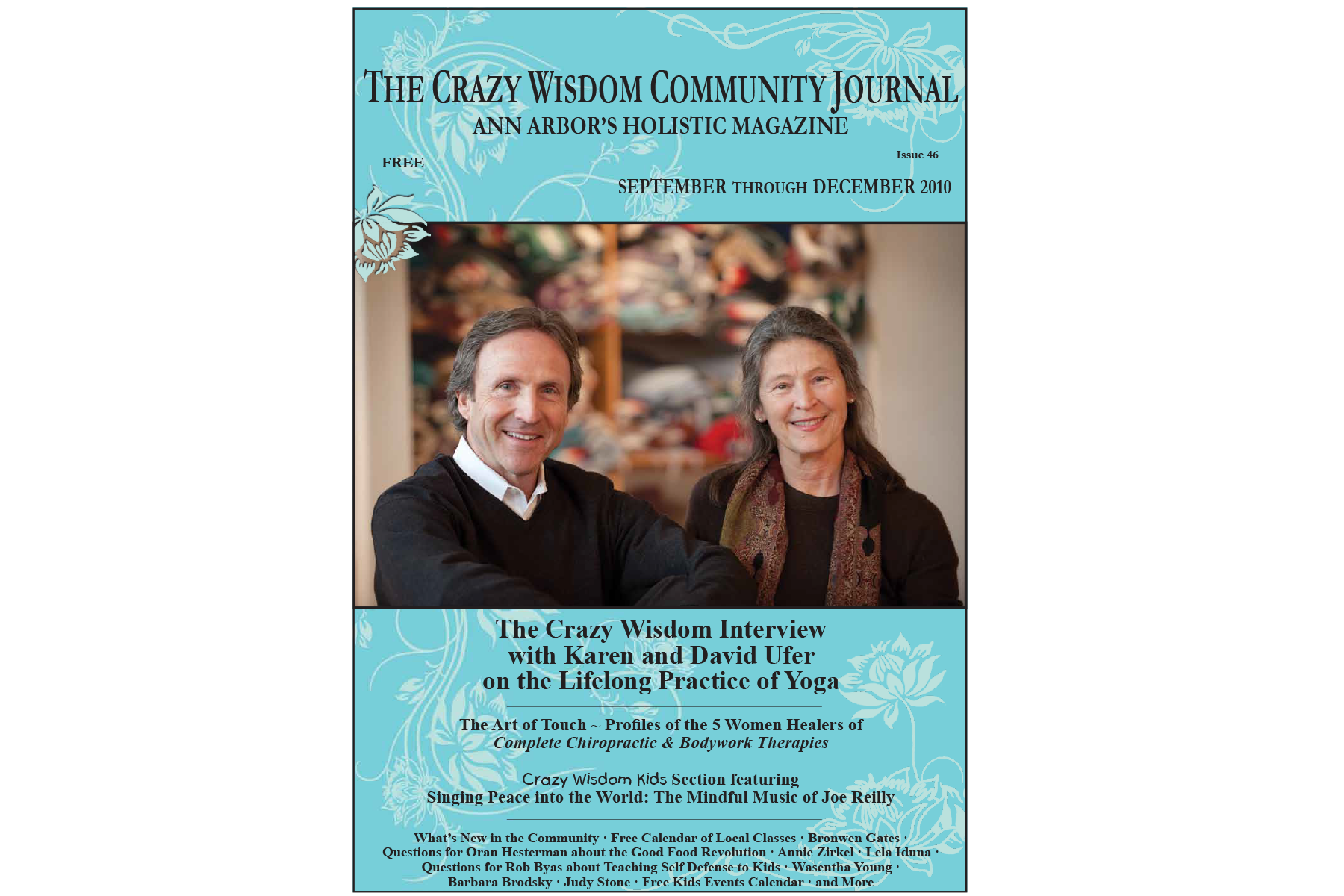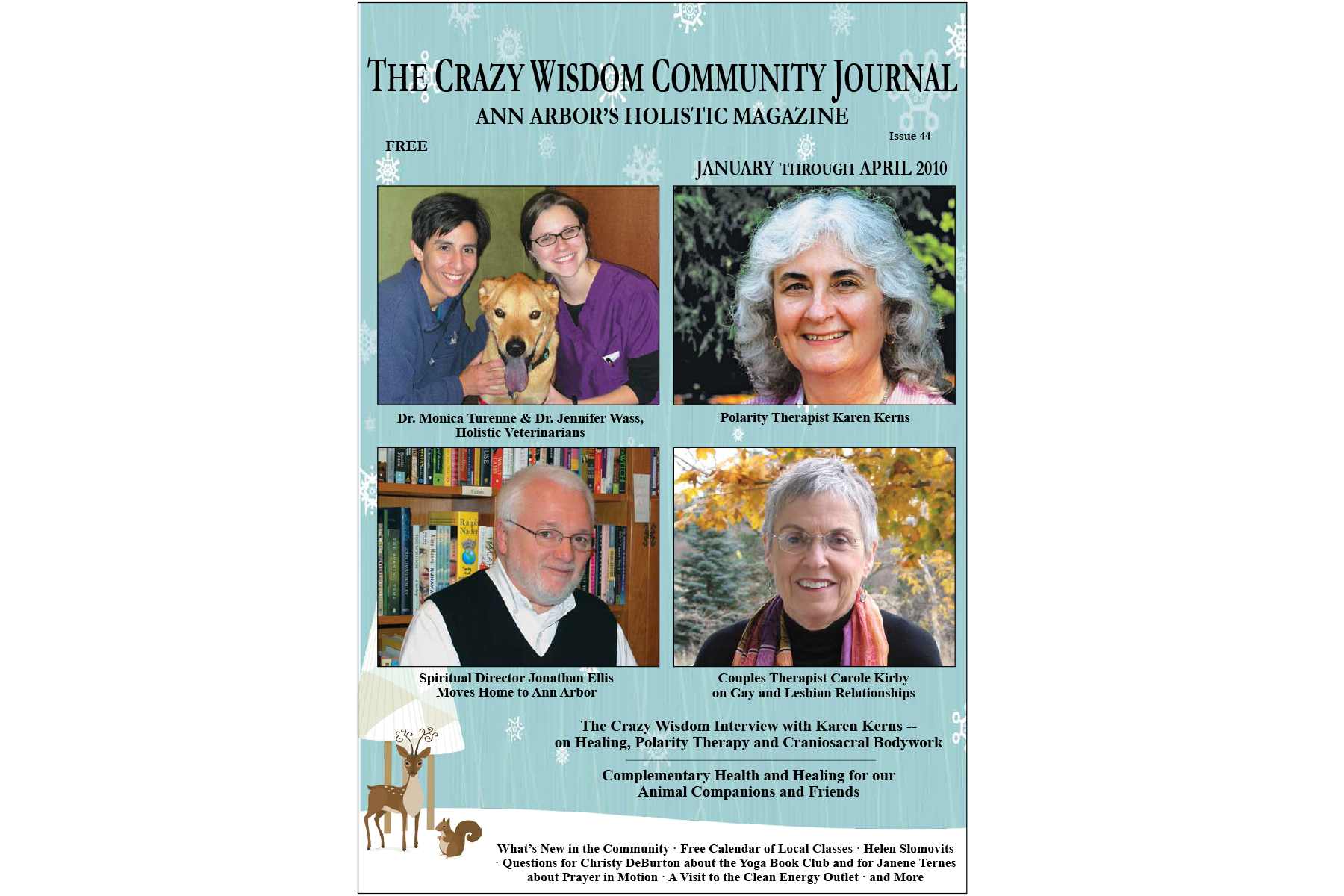My name is Fran Adler, and I’ve been a licensed therapist in private practice for over two decades. Over the years there have been many aspects of this work that I’ve greatly enjoyed. But, there is one thing about being a therapist that I’ve never been crazy about—too much sitting!
Restoration Through Ink
Identity, as defined by the Oxford Dictionary, is “the fact of being who or what a person or thing is.” As a society, now more than ever, the meaning of one’s identity has never been more fluid or more open to interpretation. What defines someone’s identity? The answer is different for everyone. But for those asking that question, tattoo artist Jamie Wedge at the Lovely Monkey Tattoo in Whitmore Lake is hoping to provide a solution.
Collaborative Therapeutic Massage
I view what I do as a collaboration between myself and my client—and sometimes, indirectly, between my client, other practitioners, and me. I expect my clients to work alongside me to ease their muscles, take further steps in their own healing, and work at shifting their posture.
The Aura Inside You: Photographing Your Deeper Self
Article and Photos By Cashmere Morley
If you ever have days when you’re feeling blue, or become red with passion, a recent resurgence in an antiquated form of spiritual photography says those feelings may not be too far off from reality.
Aura photography has become more and more popular on social media these past few years. The concept, which attracts enthusiasts and critics alike, originated in the 1970s. Unlike thermographic cameras which detect heat, aura photography captures a person’s aura. Aura photography is not a fortune-telling device nor a way to resolve questions. It captures the state you are in, right now, in your most present moment.
The uptick in recent interest in the practice has resulted in a flood of wispy, magical polaroids and inkjet-printed stills, scattered across screen feeds like a cotton candy, psychedelic dream. It’s a versatile practice in that everyone from grandma to teen brothers to Gwynth Paltrow is ready to discover what their own aura can tell them about themselves. But to understand what aura photography is, one must first understand the definition of an aura.
The first entry of the word aura in the Oxford Dictionary defines it to be a noun, meaning the distinctive atmosphere or quality that seems to surround and be generated by a person, thing, or place. Used in a sentence— "The ceremony retains an aura of mystery." The second entry, however, defines the word as a noun in terms of “spiritualism and some forms of alternative medicine:” a supposed emanation surrounding the body of a living creature and regarded as an essential part of the individual. Used in a sentence: "Emotional, mental, and spiritual levels form an energy field around the body known as the aura." Both definitions incorporate this idea of the aura surrounding the body, in one form or another.
Healthline.com notes that the “interpretation of what an aura is varies among practices and philosophies.” While that is true, what remains a constant through the different interpretations is the idea that all things in this universe have energy. Whether that energy is a reflection of your spiritual and/or physical body is up for debate. In more generic terms, an aura could be thought of as a vibe. If someone is giving off bad or good vibes, that’s their energy, or their aura, that you are sensing. In short, all things have energy: plants, people, pets, rocks. It’s the way you send out those vibes or energies that manifests as an aura.
Annette Schilz, owner of DNA Sales 2100 in Tecumseh, believes that through aura photography, she can show visitors how to tap into their deeper selves. Specifically, she believes your aura “shows you the energies that you are receiving and sending, and that it changes with your emotional state and your health. Ideally, having a strong aura helps protect and feed your chakras and maintain a good mind, body, and spirit balance.”
Said Schilz, “We interpret the aura as your energy field around your body. It’s like an emotional gauge, a little bit. You can tell what mode your thoughts are in by what colors are going to appear in the photo, and then naturally your chakras come into play with that, too. To me, they kind of meld together. Each thought or layer naturally goes to a different mode. I believe there are seven layers, which align with your seven chakras.” Those layers are physical, astral, lower mental, higher mental, spiritual, intuitional, and absolute.
Auras can change, second by second. With the use of rocks, essential oils, tuning forks, and more, Schilz can help guide visitors toward adjustments in their chakras, if they seek it. Sometimes, chakras can appear in aura photography sessions as blocked or lesser in levels than other chakras. By aligning those troubled chakras with objects that emit vibrations targeting those areas, anyone can learn how to make small adjustments in their lives to open themselves up to their full capacity, spiritually and otherwise.
“If you happen to get creative one day, and you say, ‘okay I need to do this creative thing,’ that's going to bring in those energies, it's going to change your colors to more creative green hues. And then, if you get into a layer of your mind where maybe you're thinking of someone you love, then that's going to change your chakras. What I love about the photography aspect, is that it gives a great visual so people can see how quickly the aura can change.”
A common question people have coming into aura photography, said Schilz, is, “What can I learn about myself?’”
To read an aura photograph, look not only at the colors and what they represent, but how are those colors haloed around the subject? Colors at the top of the photo represent your consciousness. The color to the left of the subject represents the energy that’s coming in, or the lens you see the world through. Are you an optimist? A pessimist? The color emanating on the right side of the subject’s body represents the energy that he or she is expelling. This is how the world perceives you. Are you warm and friendly? Or do people generally try to avoid your company? The visualization of an arch represents a goal or an aspiration the subject is perhaps trying to archive.
Read related article: Soul on a Short Leash: Butterflies, Bees, and Technologies
Colors can appear as a solid through the photograph, or can be mixed, a graduation from one color to the next. Red generally means the subjects are passionate but are encouraged to go out into nature to restore a balance in their lives. Orange auras exude confidence but can be emotionally aloof. Tan auras are generally organized go-getters that work best with structure in their lives. Yellow auras are known for their optimistic, warm personalities, which allow people to feel comfortable around them. Green can mean creative or goal-oriented types, but these energies can also hold themselves back. Blue auras are tied to nurturing, sensitive energies. Water activities can make them feel more grounded. Purple auras are the unconventional, non-judgmental types. They are encouraged to keep a journal and to trust in others. A white aura generally means intense energy and cosmic wisdom.
Schilz brings up a story about renowned psychic Edgar Cayce, who allegedly had the ability to ‘see’ auras without any kind of technology intervening. One afternoon, Cayce was going to board an elevator but stopped himself from entering, when he noticed everyone inside had a black aura clouding them. According to Schilz, the elevator line would end up snapping, killing everyone inside.
“Think about the people you surround yourself with,” said Schilz. “If you’re with someone that really brings you down, brings your energy down, and you tell yourself ‘Oh, I’m only around them for a half-hour, it’s okay,’ this practice disputes that. The energies you surround yourself with, do matter.”
Is the energy that surrounds us and everything else measurable? And if so, how? As we turn to how the camera captures the aura, we must also examine how an aura manifests itself.
To discuss the more tangible, scientific side of the aura phenomenon, we begin in Soviet Russia in the 1930s. Born out of Kirlian photography, the aura photograph was conceived when a scientist accidentally charged an object with electricity while sitting it on a photographic plate. The charge created when the two coalesced created a colorful ‘energy’ as the electricity discharged from the plate.
Aura photography did not take off, however, until the rise of alternative healing methods, such as crystals, in the 1970s. Guy Coggins took the Kirlian technique and tweaked it to his own camera system, resulting in the AuraCam 3000 (a later version, known as the AuraCam 6000, is still widely used today)
The AuraCam 6000 shows auras evolving in real time. To manifest your aura, you begin by placing your hand on a plate that contains sensors. Those sensors collect deviations in temperature, humidity, and static electricity. These parameters are then projected as a brilliant, colored aura on screen. Other parameters such as aura power, chakra levels, and balance between male and female energy, are also reported by infographs, and are all factored into the color that manifests onscreen and in your aura photo. If chakra adjustments are made during this time, the aura will reflect those changes almost immediately.
While Schilz had an AuraCam that connected to the top of her computer, some practitioners of aura photography use a polaroid to capture auras, since it is more portable and can be used anywhere, as opposed to having a set studio space. Christina Lonsdale, Portland creator of the popular roving polaroid photography aura practice, Radiant Human, prides herself on being the first “roving, fully adaptable aura photography laboratory” of its kind, in that she comes to you for an aura reading.
Lonsdale claims Radiant Human works as a “conduit for those seeking a new kind of self-exploration—a brief, metaphysical vision quest, compelling us toward a uniquely tangible kind of self-discovery.” She notes that while aura photography can help occupy “the gray space between science and mysticism,” familiarizing ourselves in the practice “immerses us in the quantifiable forces just outside of human perception—helping us to acknowledge the naked energies we all radiate into our world. Perceptions can pivot with the click of a shutter, illuminating our truest selves, and giving new light to what was there all along.”
Schilz said she has been able to help diagnose and treat everything from stomach ailments to hernias in visitors, based on what chakras appear to be blocked or appear as lower levels in their aura photo. Whether you believe in the technology or not, Schilz suggests everyone should approach aura photography with an open mind.
“My whole theory is that we really need to do more on our emotional level,” said Schilz. “I mean, I think that's kind of what's being missed. People are so focused on the physical, but they never really attach any of their problems to the emotional. So, we decided aura photography would be a great tool to help people first visualize and understand how outside problems might be connected to inside emotions, and it starts with getting in tune with the aura.”
Visit DNA Sales 2100 for an aura photograph at 406 North Pearl Street in Tecumseh, MI, between Monday and Friday, 10 a.m. to 7 p.m., and Saturday, 10 a.m. to 6 p.m. To learn when Radiant Human is coming near you, visit radianthuman.com.
Related Content:
Angels On the Surgery Critical Care Ward: Ice Water, Warm Blankets, and 24/7 Prayer
It all started from eating bad chicken, or so I thought. I lost everything in my stomach over a period of three hours, and the pain was only getting worse, so I called the answering service for my primary care doctor. It was early in the morning on May fifth, and a nurse instructed me to go to the U-M Hospital ER right away. I had a lot of misgivings, mostly because I knew from a doctor friend that the U-M was still treating a significant number of people for Covid-19.
Sustainable Health: Ask for Help!
The weeks and months after my first child was born were some of the most difficult I have ever experienced. I was depleted from blood loss, and it felt like all the nutrients in my bones and muscles were being concentrated into the growing baby and breastmilk. For the first few days, my husband carried me down the stairs. He changed every diaper for the first month. However, the sleep deprivation, the intense emotional changes, and continual nutritional depletion converged to bring me to a point of stress in my system I was unprepared for and had little facility to manage.
Bowenwork for Gentle Healing
I had been suffering from neck and shoulder pain for many years due to a car accident. Although weekly chiropractic and massage helped, my problems never fully resolved. Over the years I tried many healing modalities with no lasting relief until a friend suggested I try Bowenwork. I found a practitioner and gave it a try. Since I was used to vigorous massages, I was surprised with how little force was used with Bowenwork. After the second session, I started noticing some wonderful changes. Eventually, my neck and shoulder issues resolved, as well as other issues that I had not communicated to my practitioner.
Stirring the Spirit to Health: A Profile of Energy Healer Karlta Zarley
There you are minding your own business, and the sound of a battalion of bees builds to a crescendo—and then disappears just as rapidly. If upon hearing the sound you freeze in momentary panic, you only have a nanosecond to catch a glimpse of the source, and most often it will only be a blur. Seasoned, you know to not swivel about wildly, but to scan with your eyes and turn slowly. Then, you may see the actual flight of the hummingbird. It is a flash of iridescence, a determined small head leading a wake of whirring wings—an almost visible stream hanging in the air where it cuts through this pane of reality like a knife through warm butter.
Gut Feelings and Your Brain ~ The Bidirectional Communication Between Your Brain and Digestive System
By Meghan Marshall
Anyone who’s ever had a “gut feeling” or felt the stomach-sinking effect of bad news probably believes in some kind of connection between the brain and the gut. These people would be right. However, the strong bidirectional communication between the brain and the digestive system is much more complex and intertwined than most people realize.
Bidirectional means that there are messages being sent both from the brain to the digestive system, and from the digestive system to the brain. The digestive system even has its own nervous system—the enteric nervous system.
The brain sends nerve signals, which are either carried out by the parasympathetic nervous system or the sympathetic nervous system. The parasympathetic nervous system is known as the “rest and digest” system, while the sympathetic nervous system is what responds during dangerous or stressful conditions. Consequently, when the parasympathetic nervous system is responding, gut function is stimulated while the sympathetic nervous system inhibits gut function.
These signals are sent using nerves, hormones, and inflammatory molecules. The vagus nerve is one of the key components of this brain-gut connection. The connection of the vagus nerve between the gut and the brain can influence factors like appetite, food intake, pain, mood, and more. Interestingly, most of the signals sent via the vagus nerve go from the digestive system to the brain; for example, when the stomach is empty, ghrelin is released from the gut to stimulate feelings of hunger from the brain. The information generated in the gut that reaches the brain is then interpreted by the brain and sent back to the gut in order to adjust its functions.
Knowing about this strong and intimate connection between the gut and the brain, it only makes sense that emotions, or a certain state of mind, can considerably impact digestive functions. Particular emotions can even be a predictor of certain diagnoses, like irritable bowel syndrome or chronic constipation. How can this be possible? Well, as mentioned, the body reacts via different systems depending on the present situation. When stress or danger is signaled, the sympathetic nervous system responds, moving blood away from the digestive system to help negate the threat (i.e. bringing blood to the muscles so you can run away), inhibiting the vagus nerve and slowing digestion. The hypothalamus in the brain releases a molecule called corticotropin releasing factor (CRF), generating a gastrointestinal stress response and also releasing the stress molecule cortisol.
Read related article: Why Your Gut Won’t Heal – And What You Can Do About It
During very high-stress or anxiety-inducing situations, the gut signals are felt more sensitively, which is what can lead to an immediate response of diarrhea or even vomiting during these types of situations.
This response is very helpful in life threatening situations. However, it becomes problematic when this response is chronic; common in our high-stress, demanding lifestyles nowadays. With persistent unpleasant emotions—as in someone with an anxiety disorder—this can lead to changes in the enteric nervous system over time. These changes can induce continual, increased gut sensitivity and lead to symptoms like bloating, stomach pains, or constipation. This dysregulation in the digestive system can eventually lead to diagnoses like IBS, indigestion, or chronic constipation or diarrhea. Unfortunately, each of these can be a “catch all” diagnosis when physicians can’t seem to find a physical explanation for the cause of these symptoms. Treatments for these conditions are usually aimed at minimizing symptoms instead of correcting the root cause for the dysregulation, and relief from the symptoms can be hard to come by even with these therapies. New studies are now being conducted on the effectiveness of psychotherapies like cognitive behavioral therapy, mindfulness, and hypnotherapy for IBS and similar conditions with promising results.
Stress isn’t the only emotion that can have an impact on the digestive system, however. Depression, sadness, and hopelessness can result in a decrease in peristalsis, which are the wave-like contractions along the digestive system that help to move the food through the intestines, possibly causing constipation. Anger and aggression can trigger the contractions in the lower intestine.
Furthermore, your body has the ability to store responses and memories of a traumatic or stressful event, which can elicit reactions after the event occurred, even years later. Childhood and even generational stress can cause a predisposition to the gut overreacting to stressors, leading to gut-related symptoms.
On the reverse side, dysregulation in the gut can also have a negative impact on a person’s mental and emotional state. One type of dysregulation could be the makeup of one’s microbiome, which is the name for the trillions of microorganisms that populate the digestive tract. The activity in the brain or state of mind can influence the microbiome, and the microbiome can reinforce emotions and even prolong them. Not surprisingly, the microbiome has the ability to also influence risk for digestive diseases. Some of the non-beneficial or harmful microbes are able to increase their numbers with the metabolites that result from stress. This imbalance of “bad” bacteria in relation to the beneficial bacteria is called dysbiosis. Dysbiosis can also lead to undesired gut-related symptoms.
Studies are even starting to show the association between neurodegenerative diseases and the gut. Parkinson’s disease, a progressive neurodegenerative disease, may be one example of this. Some recent studies have found that even before characteristic Parkinson’s symptoms materialize, the enteric nervous system goes through the typical Parkinson’s nerve degeneration and is accompanied by a change in the gut microbiome.
With all of this evidence contributing to clear proof that the mind and the digestive system are strongly interconnected, what should you do with this information?
One recommendation is to avoid eating whenever you’re experiencing high, short-term stress. The body’s focus won’t be on digestion during this time, which can lead to acute gut-symptoms like stomach pain and bloating.
For someone who’s chronically stressed or overwhelmed, therapies aimed at relaxing the mind and body can be beneficial. This could include yoga, meditation, walking, or spending time in nature.
In regard to supporting the microbiome, fermented foods are ideal. Some recommended sources are kimchi, miso, sauerkraut, and unsweetened yogurt or kefir. While food sources are optimal, supplemental probiotics can be an alternative. However, desired results can vary depending on probiotic strain, so it is recommended to begin these under the supervision of a qualified medical professional. A healthy diet with plenty of fruits, vegetables, and whole grains is also favorable for gut health and supporting the microbiome. Avoiding antibiotic overuse and not purchasing antibiotic soaps or household products can further benefit the microbiome and help to reduce the risk of antibiotic-resistant bacteria.
Being aware of this impactful gut-brain interconnection can help lead you to a happier, healthier life.
Meghan Marshall is a Registered Dietitian with a master’s degree in Nutrition and Functional Medicine. Meghan currently works as both a clinical and community dietitian, and is the owner of Black Moon Nutrition + Wellness. She is the creator of and writer for the new blog, Black Moon Nutrition Blog blackmoonnutritionblog.com.
Related Content:
An Integrative Approach to Women’s Health: An Interview with Holistic Gynecologist Dr. Suman Tewari
A graduate of Wayne State University Medical School, Dr. Suman Tewari is a women’s doctor who has incorporated many aspects of functional medicine and mindset coaching with her allopathic training to bring the best possible care to her patients. I sat down with her at her beautiful office in the Parkway Center to discuss what she means when she says “holistic gynecology” and why women might not feel “empowered to heal.”
Kintsugi and the Art of Mending the Broken Heart
Try to remember a time you held something fragile in your hands. You were so careful not to damage it by holding too tightly, but your grip had to be firm enough to keep it secure. Now, imagine that in the next moment it slips from your fingertips and falls to the ground in slow motion. You know that whether you swipe at it or stand in frozen disbelief, the end result is the same. You are left gaping at the broken pieces and wishing you could take back the last three seconds.
Plant Medicine and Magic
When people ask what drew me to herbalism, there are two stories that I tell. One is of my time working in the Mojave desert, where my boss—a botanist by training—would point out various native plants and tell me snippets of how the indigenous people of the area used them for food or medicine (he always spoke of this in the past tense). For him, it was an interesting tidbit of information, but I thought, “couldn’t we still?” This story is true, but the deeper truth goes back many years, to my childhood.
Tea Time With Peggy-- Tea for Energy
To say that it is an interesting year would be an understatement. At best it feels like a surreal dream has covered the landscape of Michigan. Never in my life did I think that toilet paper would be worth more than gold, that I would long for more than just an intimate gathering of a few family members, that I would be sharing internet time with children going to school—let alone have the energy to keep up with them! Some days my brain is so foggy that I would need a better jump start than what a good strong cup of black or Oolong tea could offer. So, as an alternative to true tea, I have turned to tea combined with yerba mate.
A Conversation with Erin Stohl and Dan DeSena about Somatic-Oriented Psychotherapies
An Ann Arbor couple, Erin Stohl and Dan DeSena, has found a place within the local somatic psychotherapy community. I sat down with Stohl and DeSena, pre-pandemic, to learn about how they came to somatic psychotherapy, and how their experiences as somatic psychotherapists have impacted their relationship. Stohl and DeSena are both seeing patients via video chat and doing appointments by phone.
Book Reviews, Fall 2020
Whether you are new to Pema Chodron’s work, or you are already a fan, Welcoming The Unwelcome: Wholehearted Living in a Brokenhearted World, her first work in over seven years, is incredibly timely and sounds like a kind of mantra for 2020, or perhaps the entire decade. It seems either on a global scale, or a smaller more personal one, each and every one of us has something on our doorstep we would rather not let inside. Yet, allowing what we don’t desire to enter is precisely what we must do. As Chodron points out, it isn’t going anywhere.
Namaste, Katie...Fall 2020
Whether you're a seasoned yogi or getting ready to roll out your mat for the first time,
here you'll find a variety of useful tips from local yoga instructor, Katie Hoener.
Great Lakes Herb Faire -- Learning and Sharing The People’s Medicine
Cool wind whistled through the white pines, bringing the first hint of winter on this early September day. I was west of Chelsea, visiting the Great Lakes Herb Faire. The Faire provides classes for herbal and naturopathic practitioners and students, shared ceremony, and time for community meeting. Successful since it began in 2014, the Faire draws herbalists from around the country to speak and present, but its focus remains the Great Lakes region, its plants, and practitioners.
Finding My Voice
I’m over a mile into my morning jog… the distance it takes for my body to stop complaining and just let the endorphins do the work. Pink is turned up all the way in my headphones, and my feet are locked in with the beat. I’m in the best mood. So I’m not even annoyed as I near a crosswalk and slow down just in case I have to wait for oncoming traffic.
Essential Oils: More Than Just Pretty Aromas
Sure, essential oils can leave your home smelling of fresh cut lavender or the bright citrusy scent of lemons, but they are so much more than a pretty aroma. Did you know they could be used to support healthy emotions, keep you alert, focused, calm, and relaxed? All this is made possible in the limbic system, which is our emotional brain. Our limbic system supports five major functions: emotions, behavior, motivation, long-term memory, and sense of smell. As you inhale essential oils, the tiny molecules enter the nasal cavity and pass by the olfactory bulb. Your olfactory bulb is a part of your limbic system and therefore your response to an aroma is going to be emotional before it can be rational. This all happens in three seconds!
Tea Time With Peggy-- Cold Noses, Warm Teas: Comfort Tea for Winter
The 2019 Farmer’s Almanac has predicted another cold, snow-filled winter for the state of Michigan. Big Surprise! Having lived in Michigan most of my life the prediction seems average at best. A mild winter is more of a rarity than one with consistent below zero weather and a foot of snow every two days. I say embrace winter! It’s a good time for winter sports such as skating, hockey, skiing, and sledding. Wintertime is tea time. After all, there is no better way to warm up from being outside in all the cold and yuck, than a warm, flavorful drink. Winter is a playground for various hot tea combinations. Some of the herbal teas, such as peppermint, can even spice up your coffee or cocoa.
